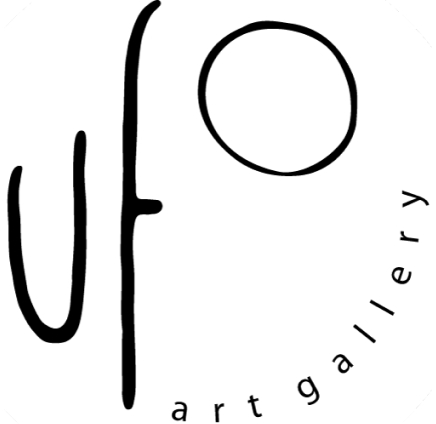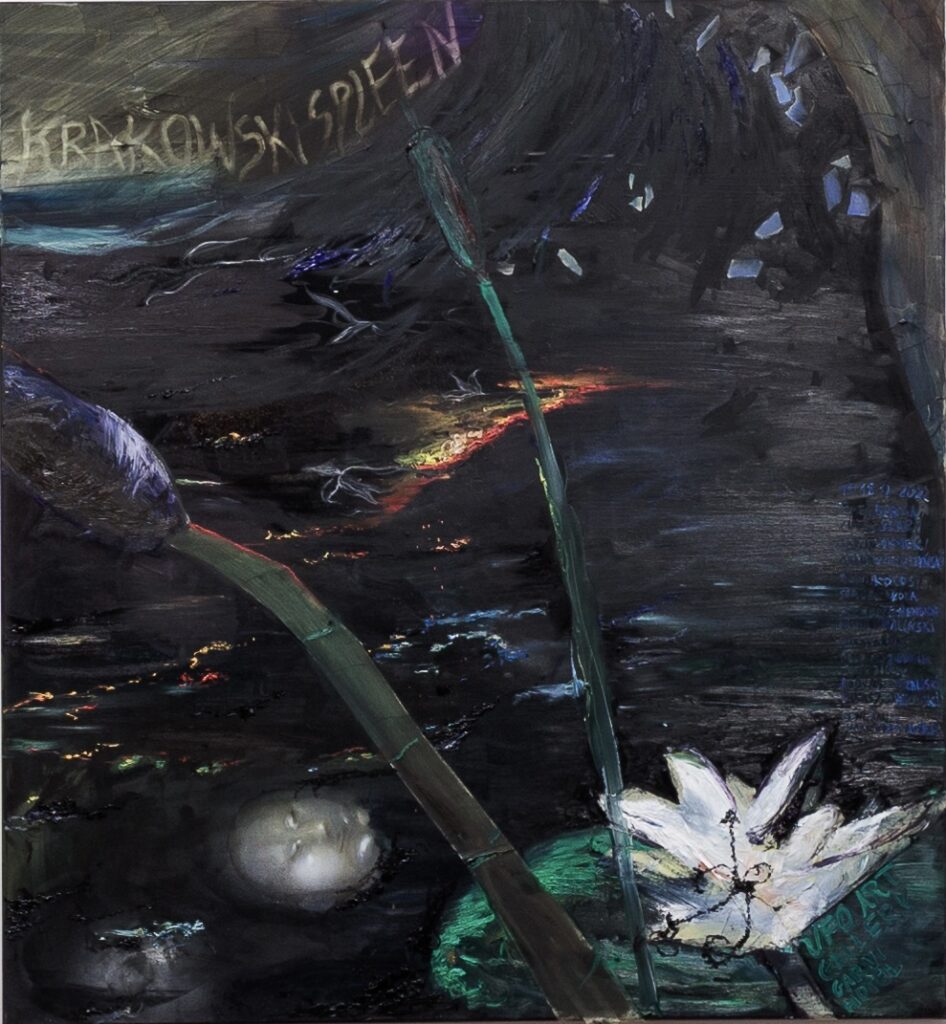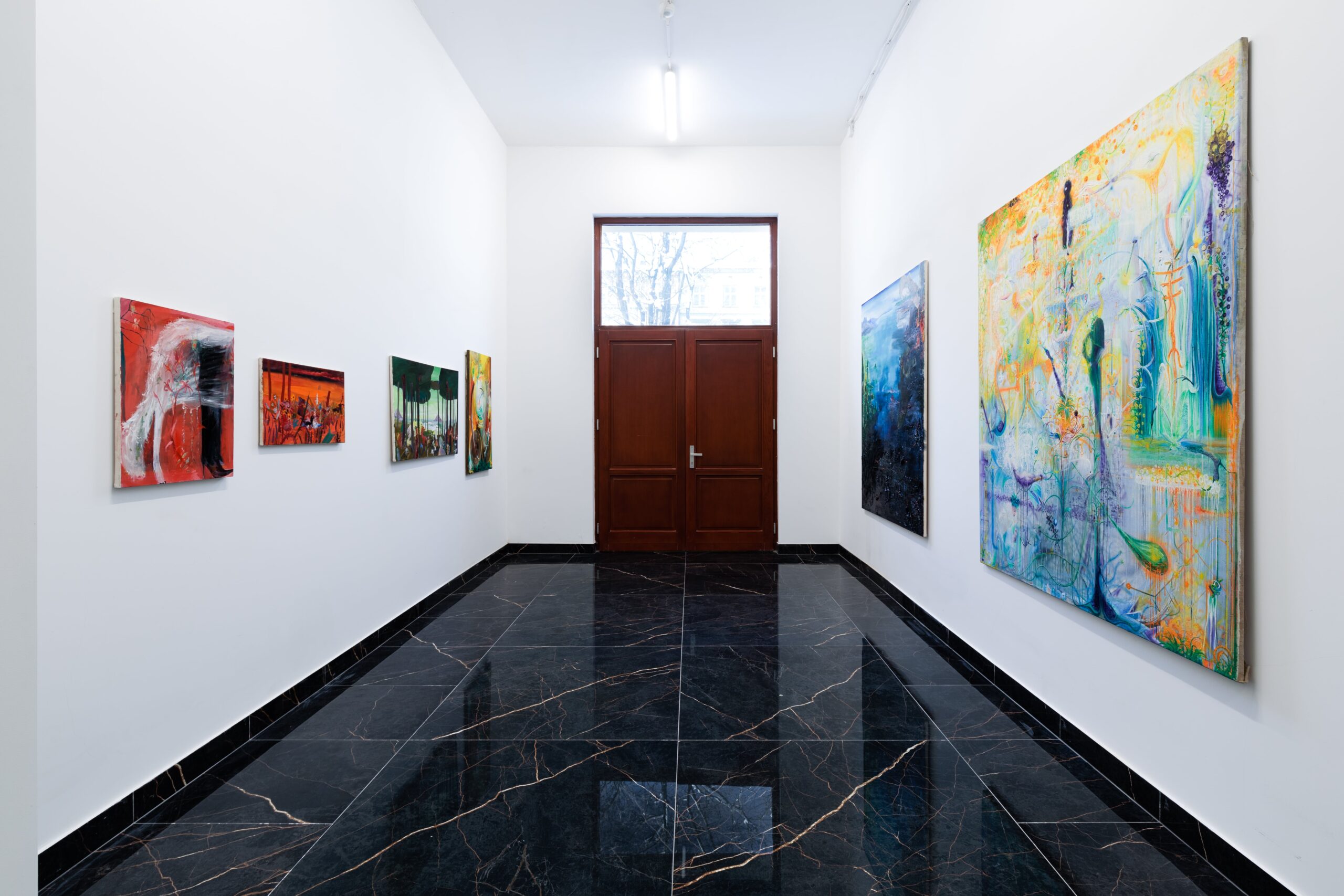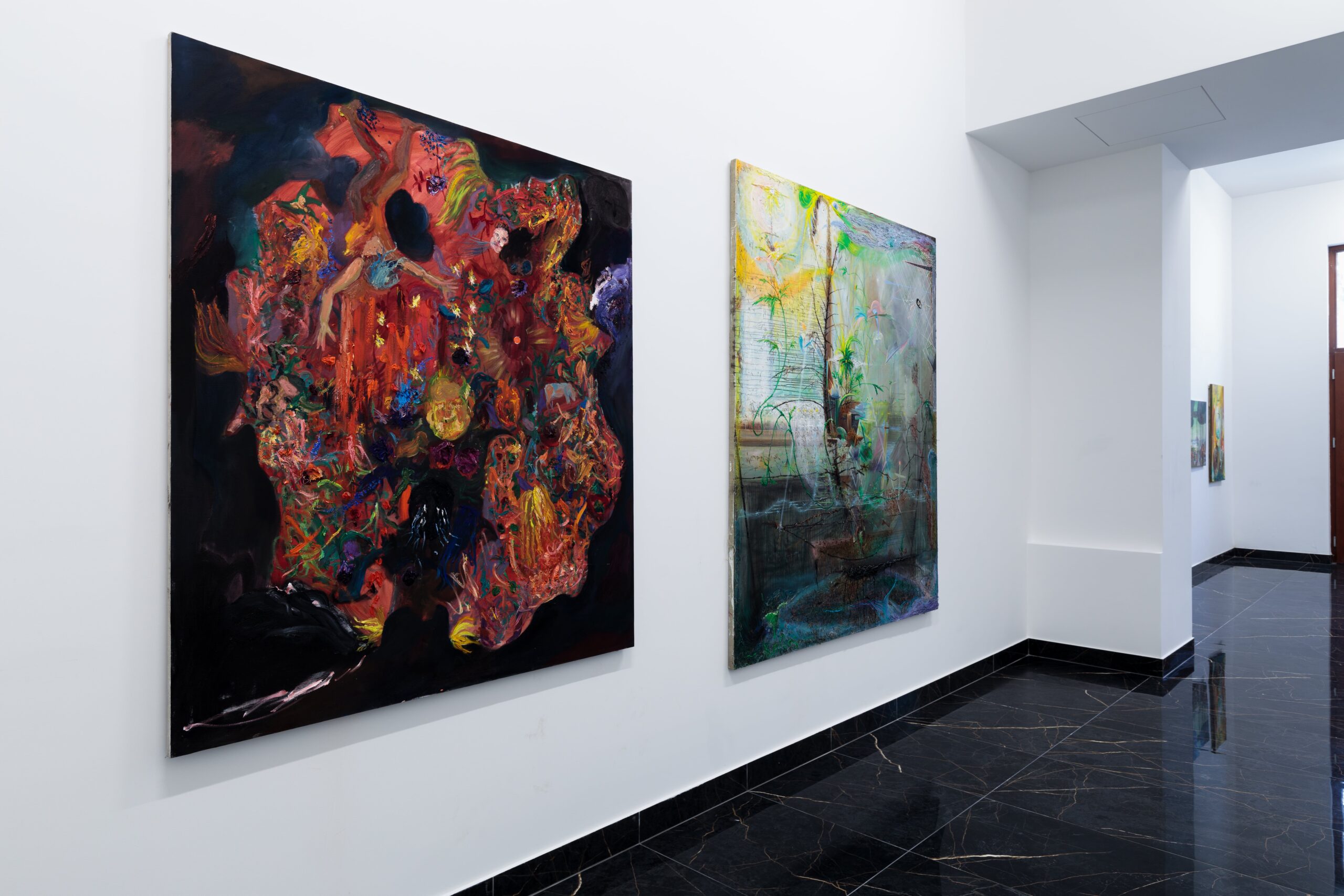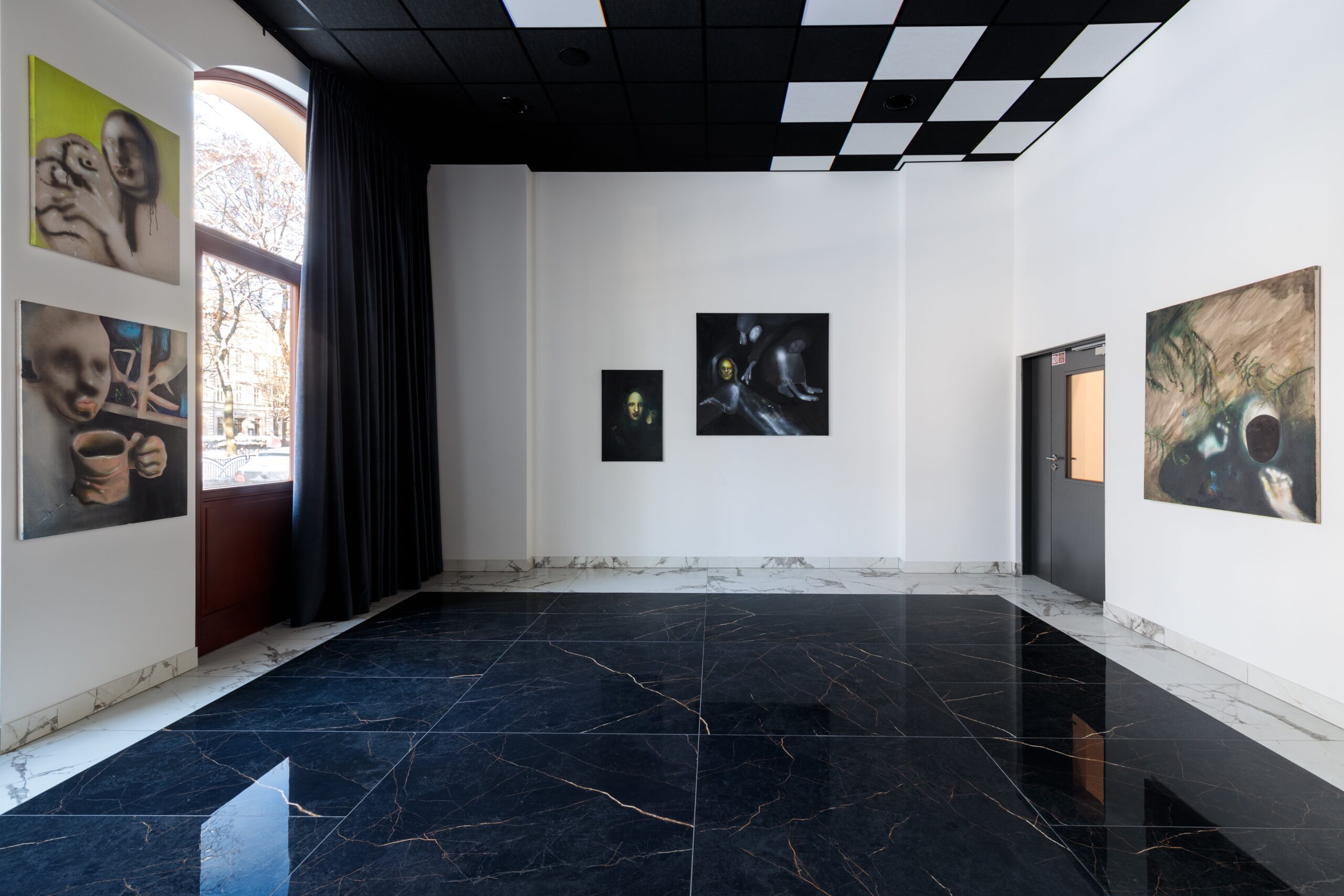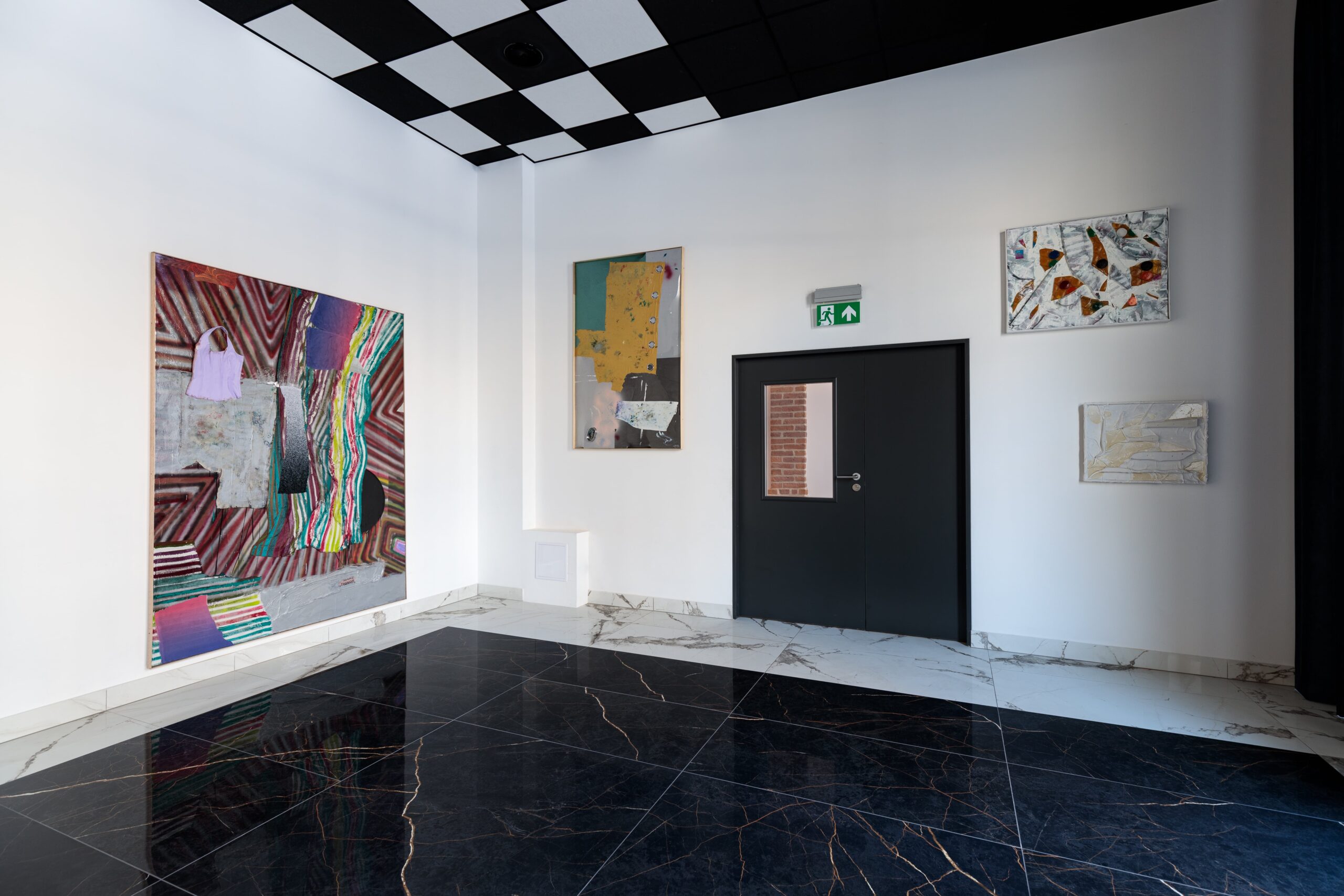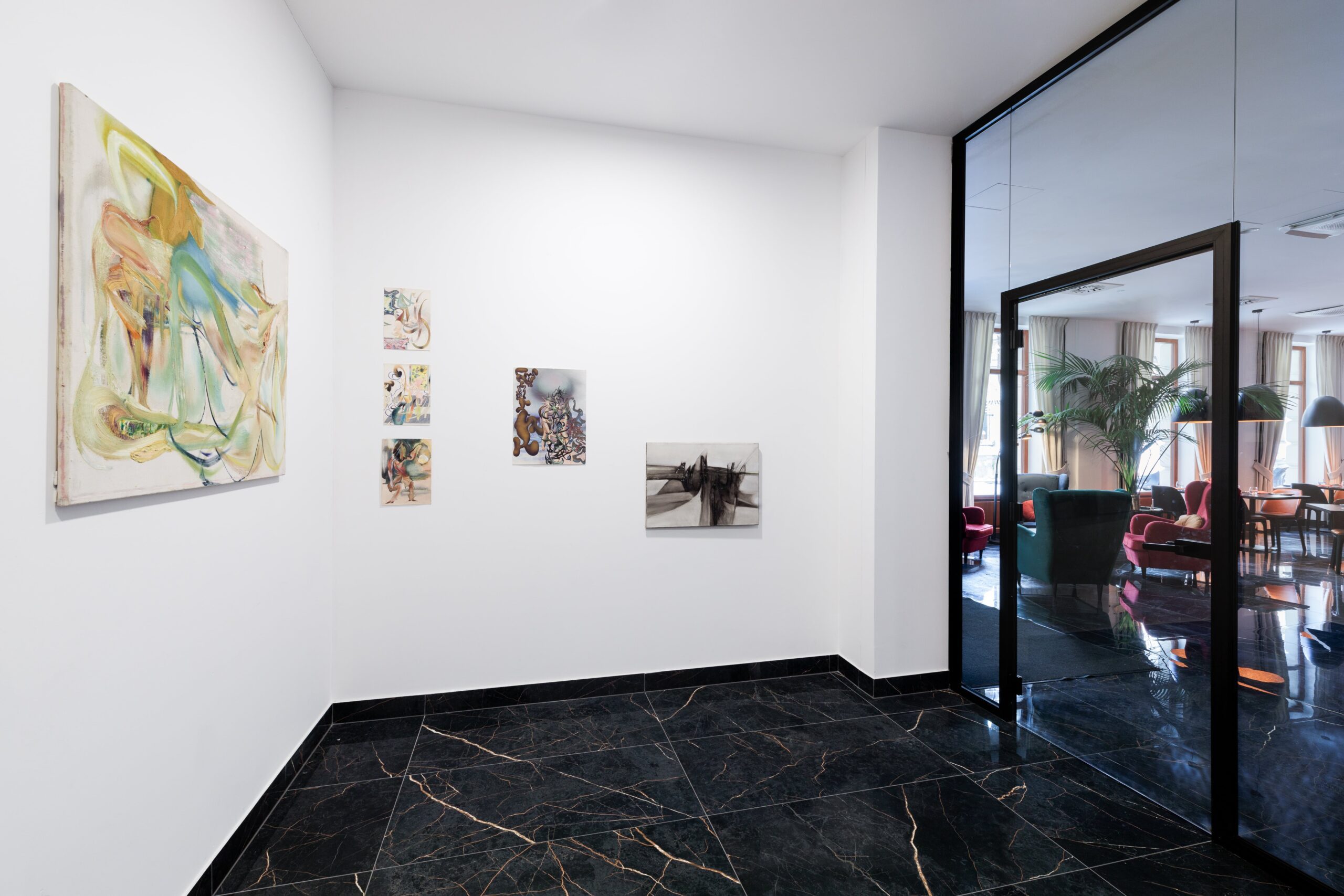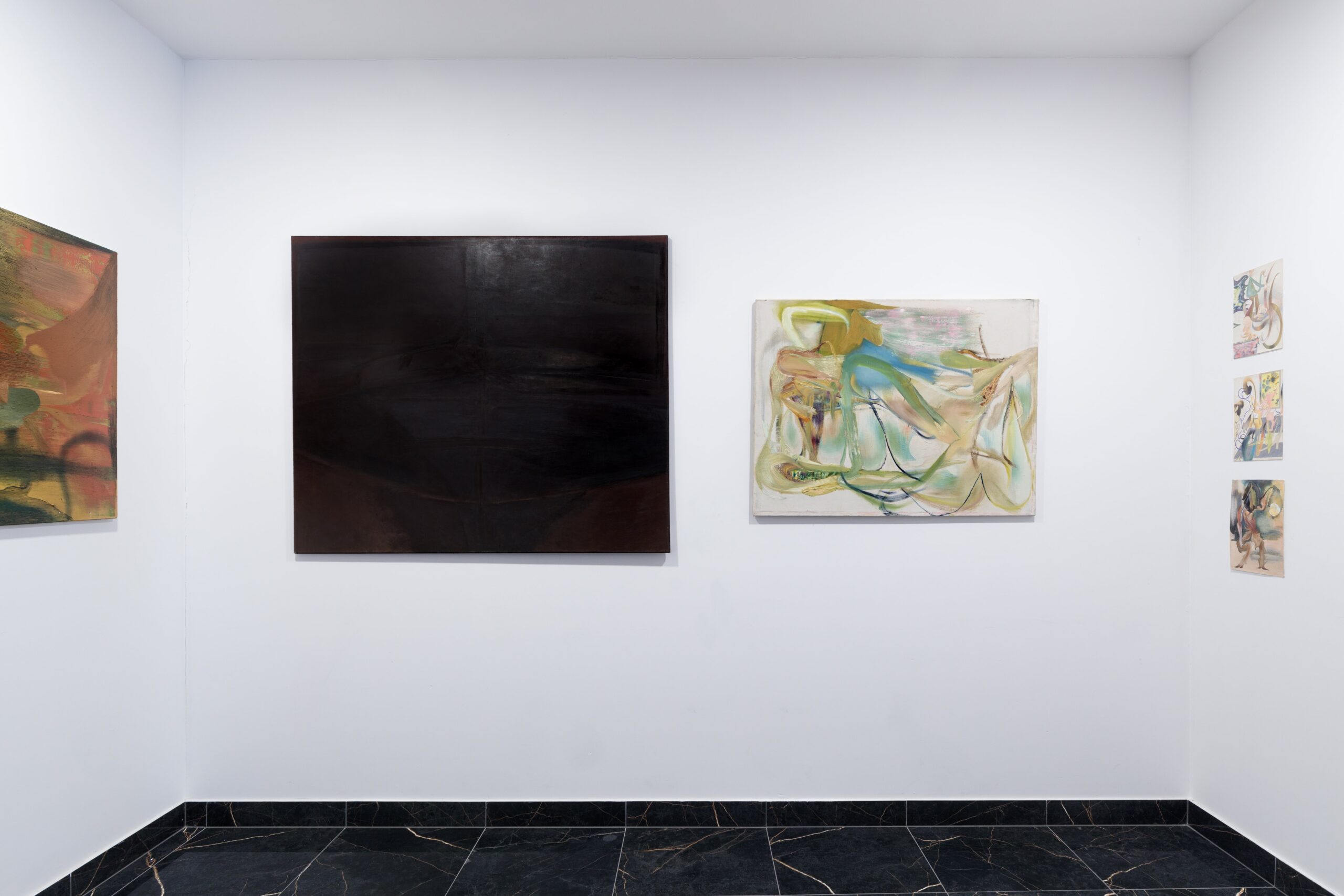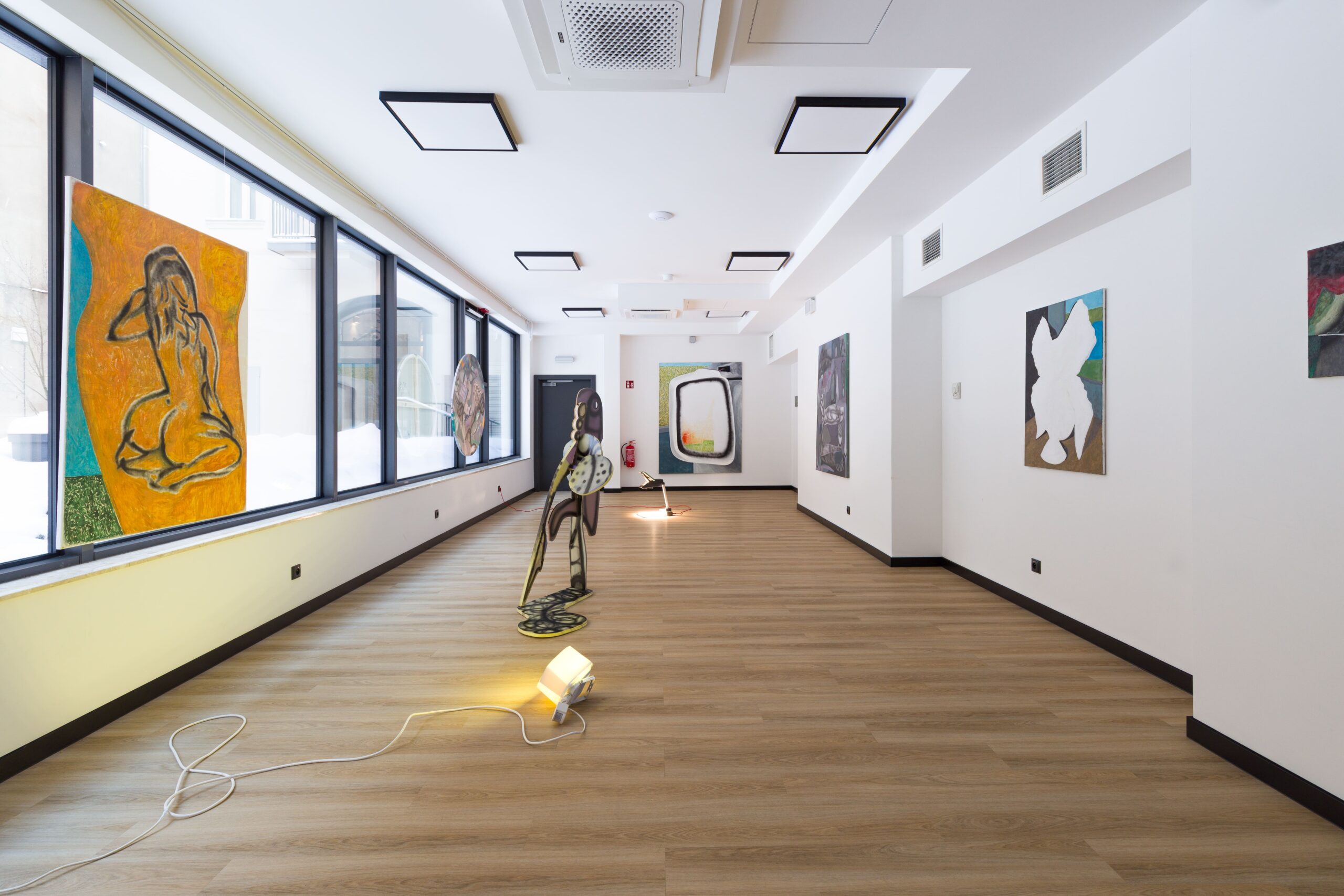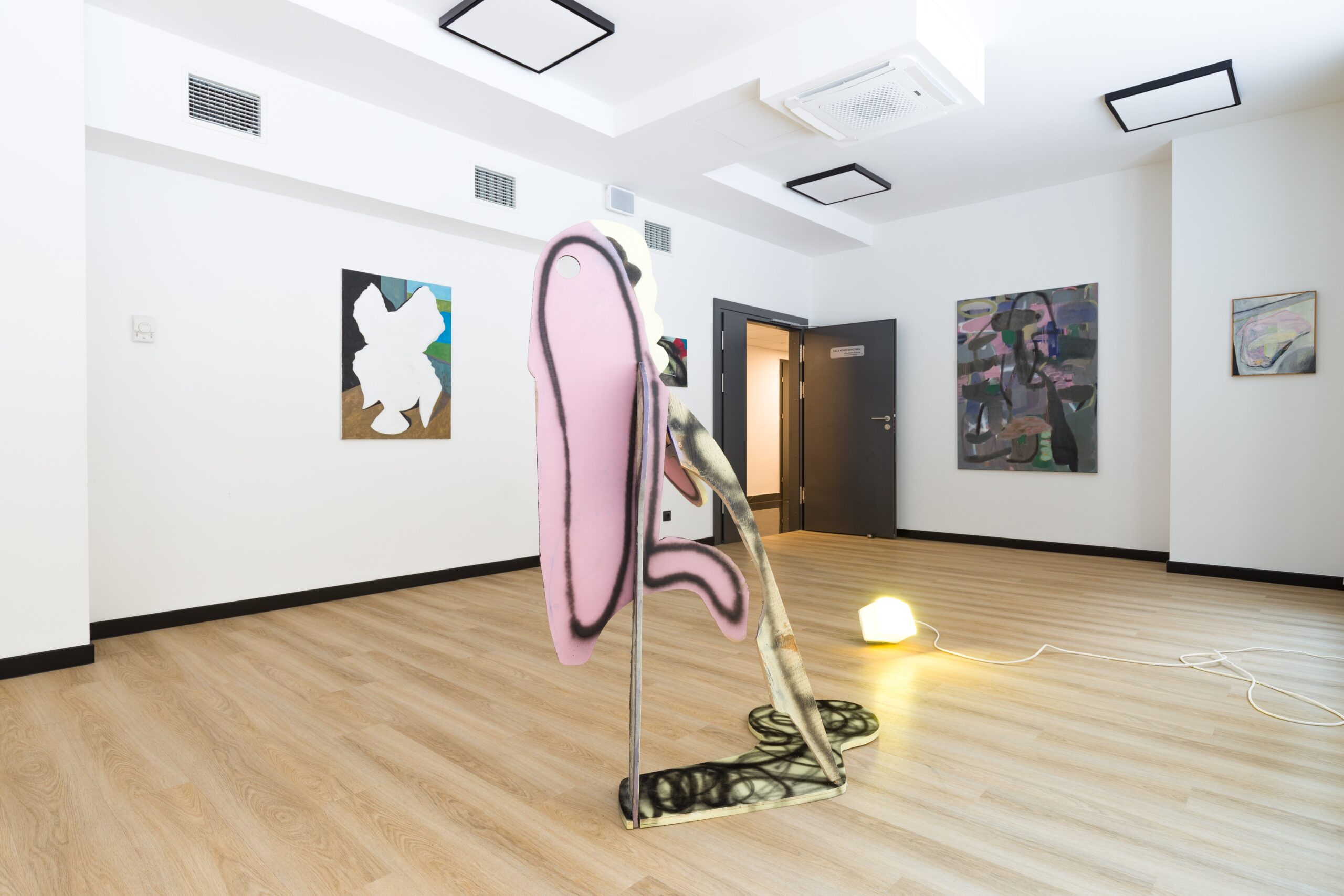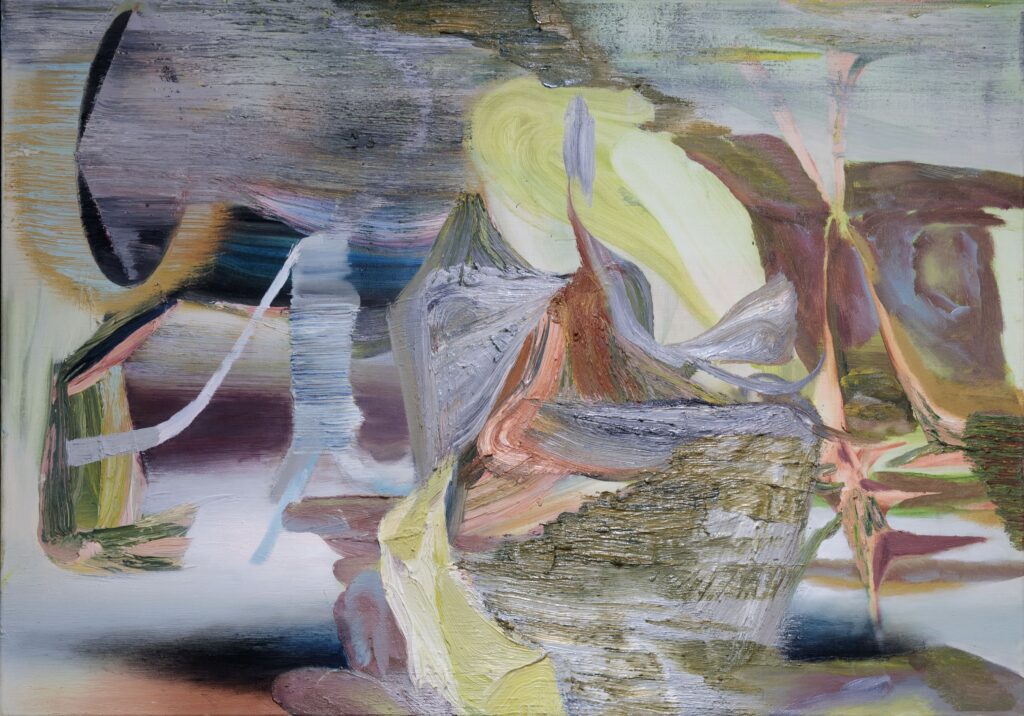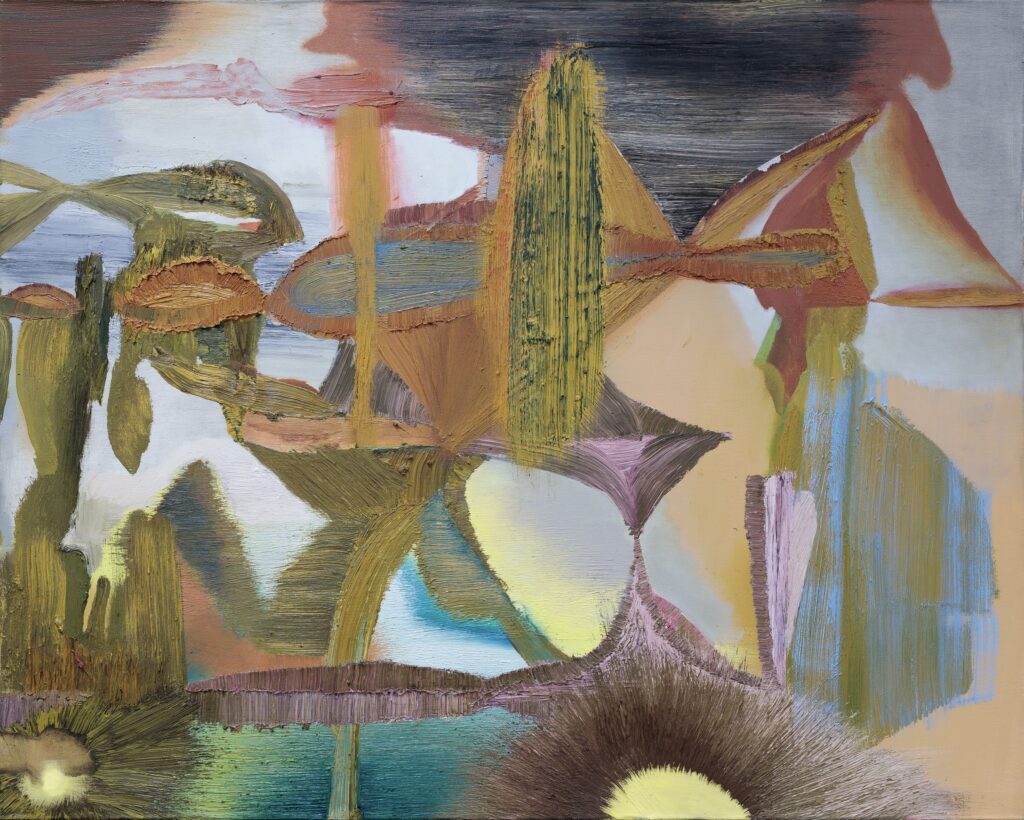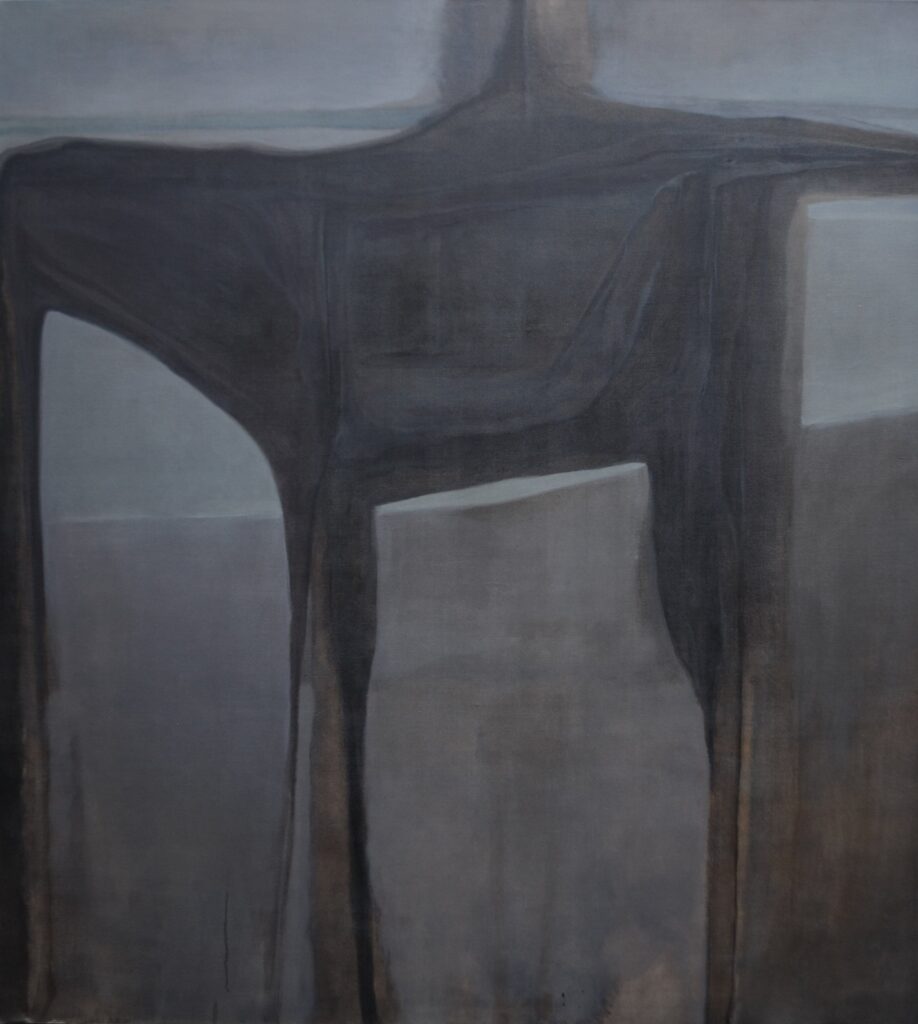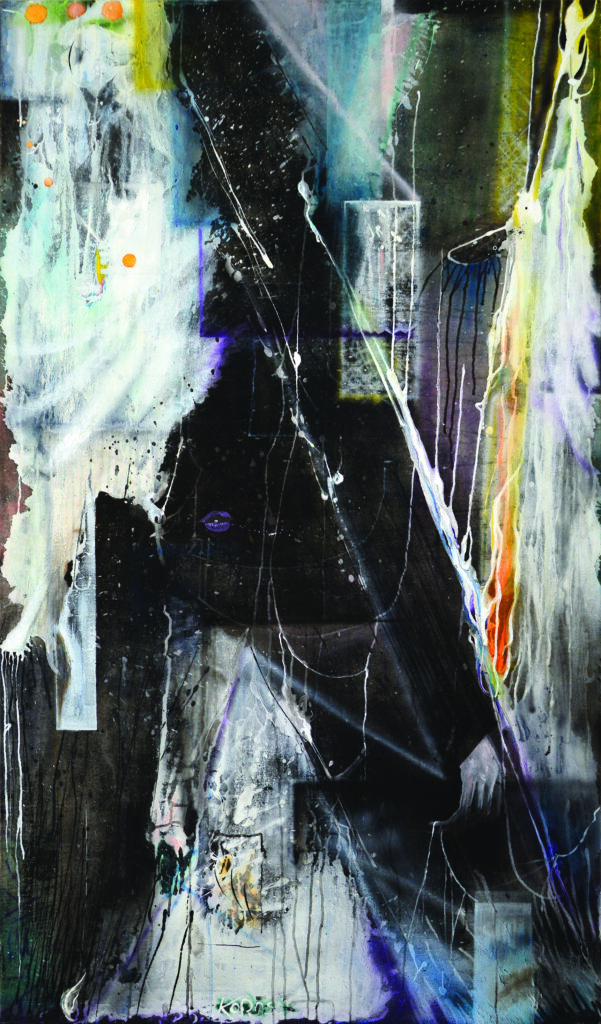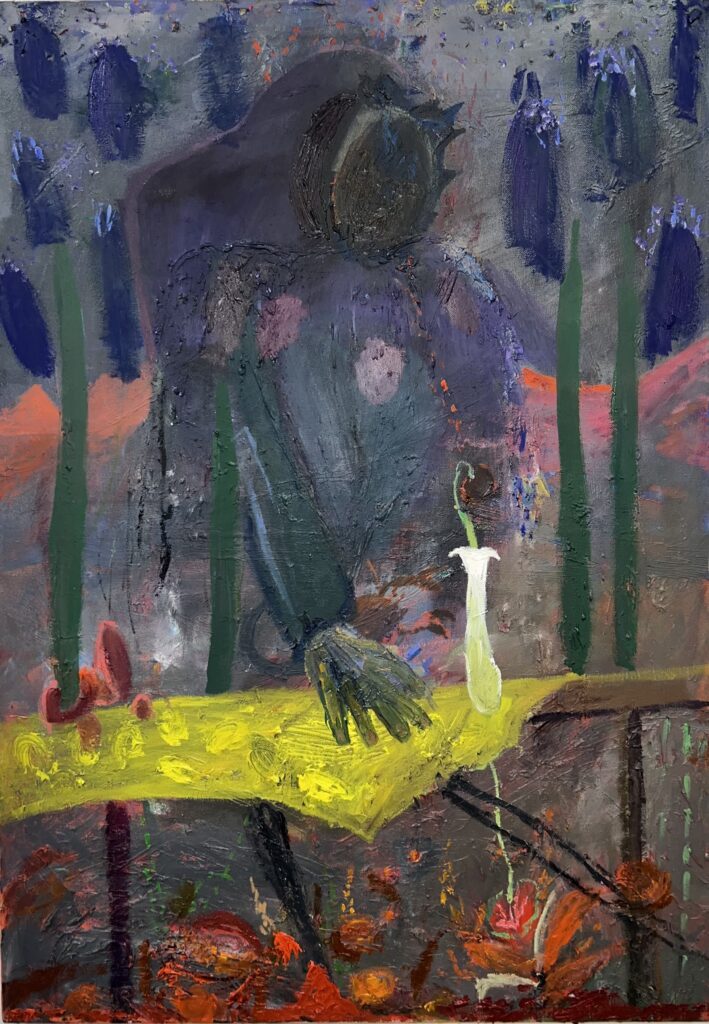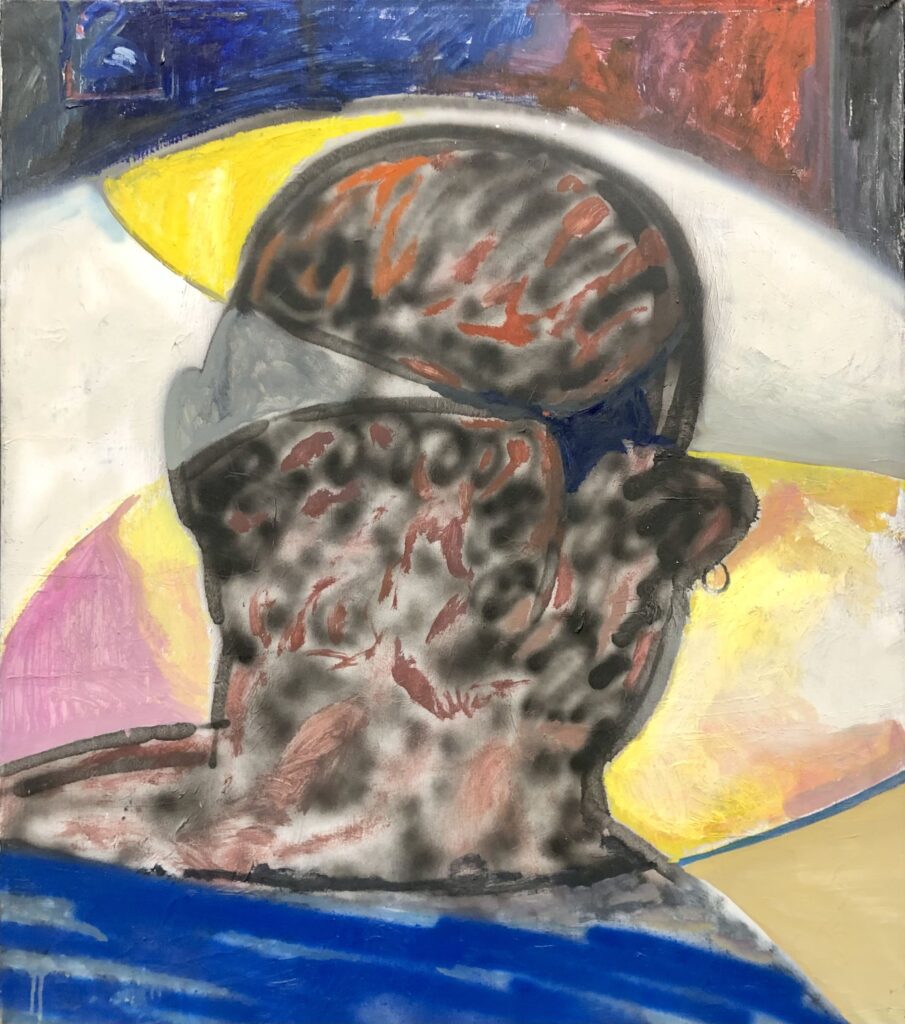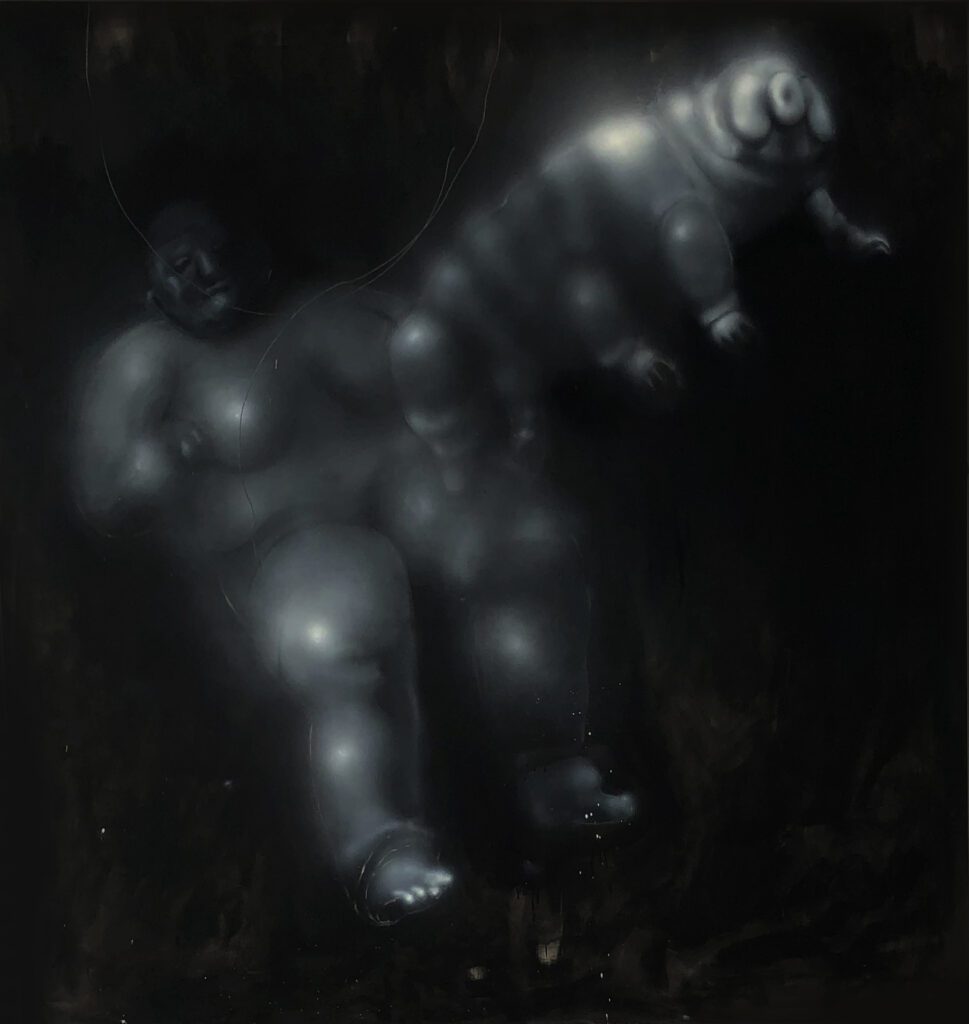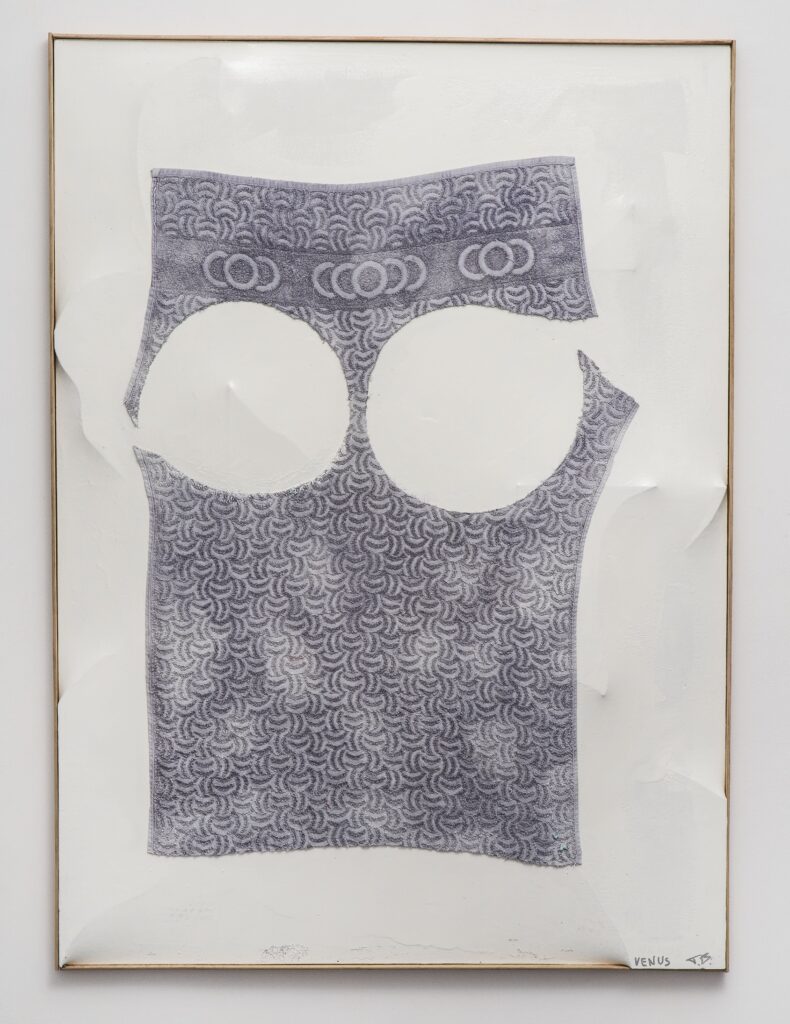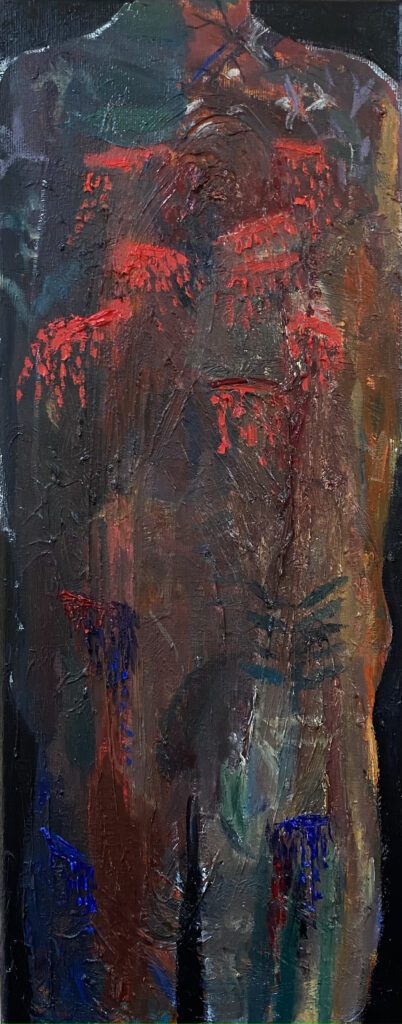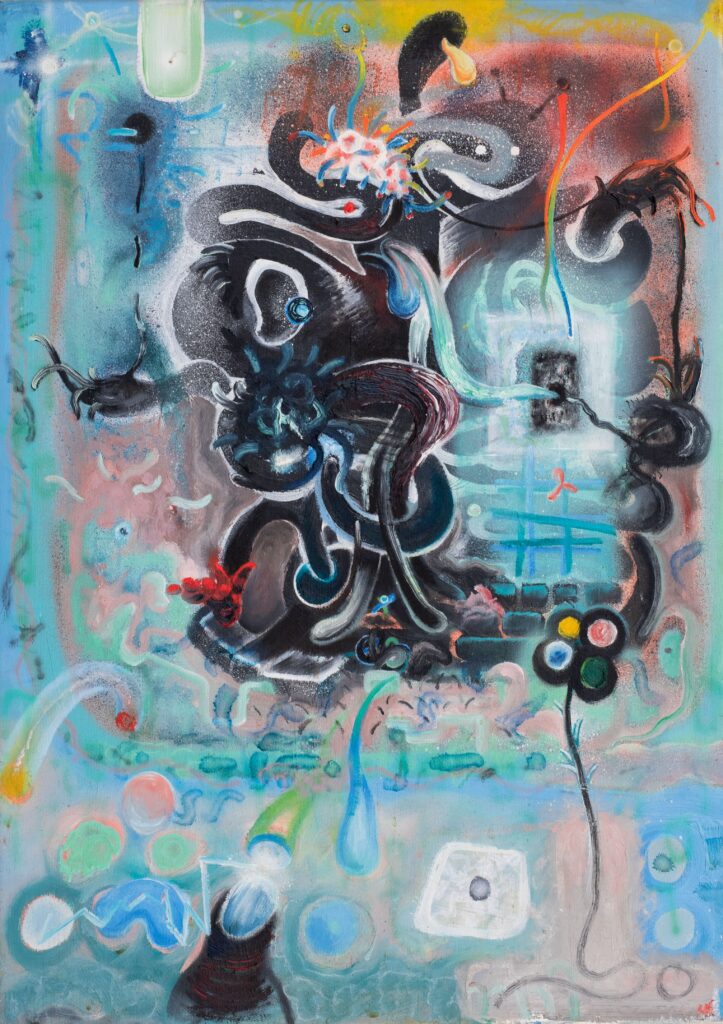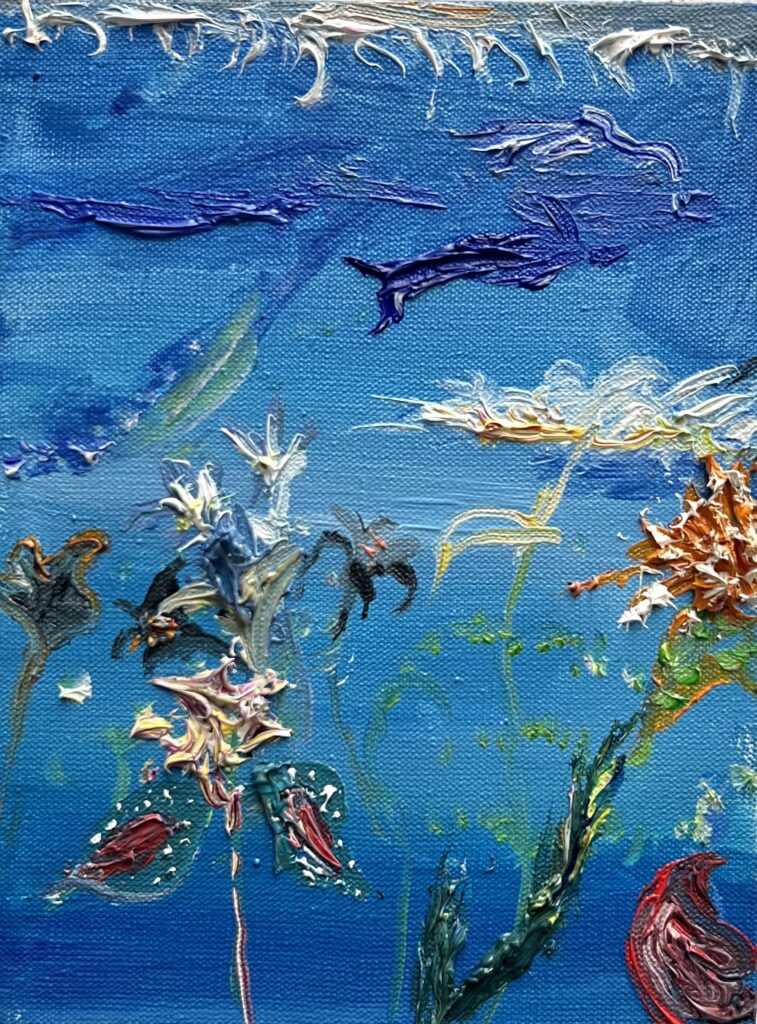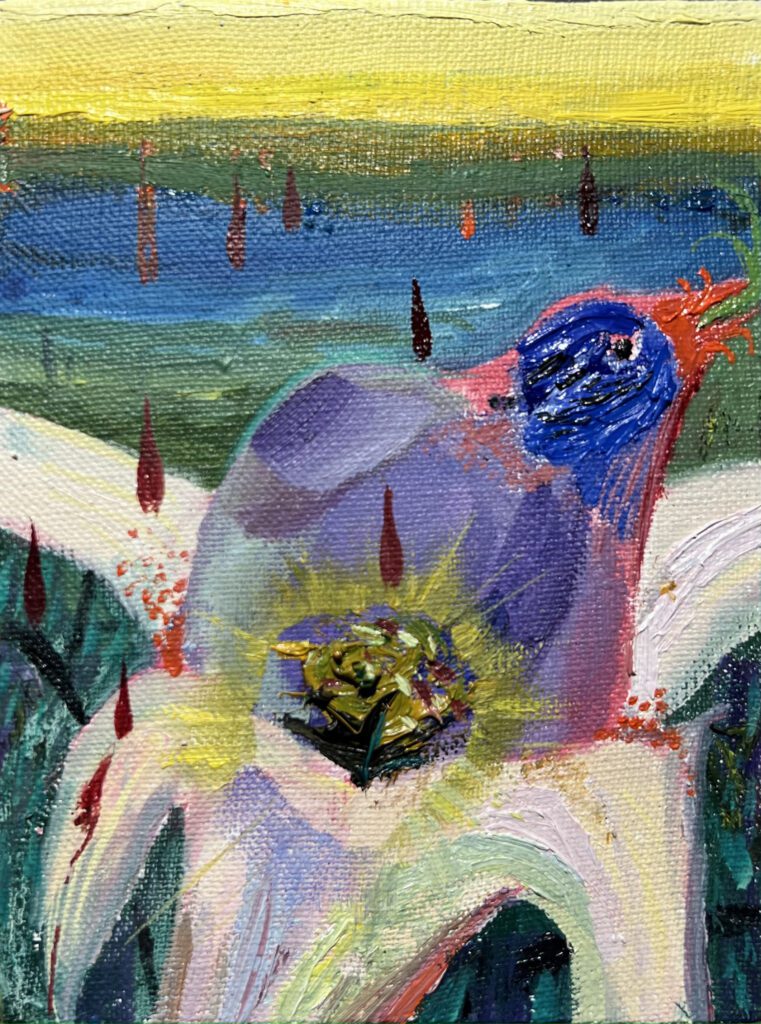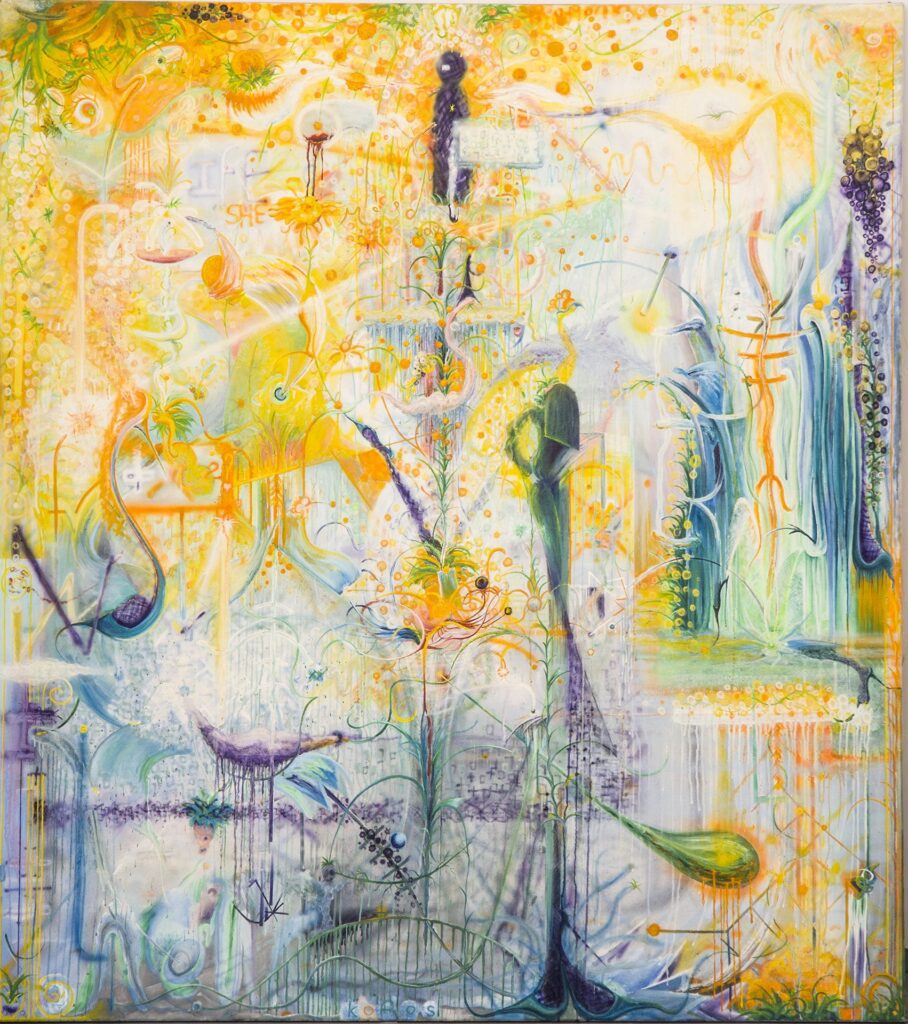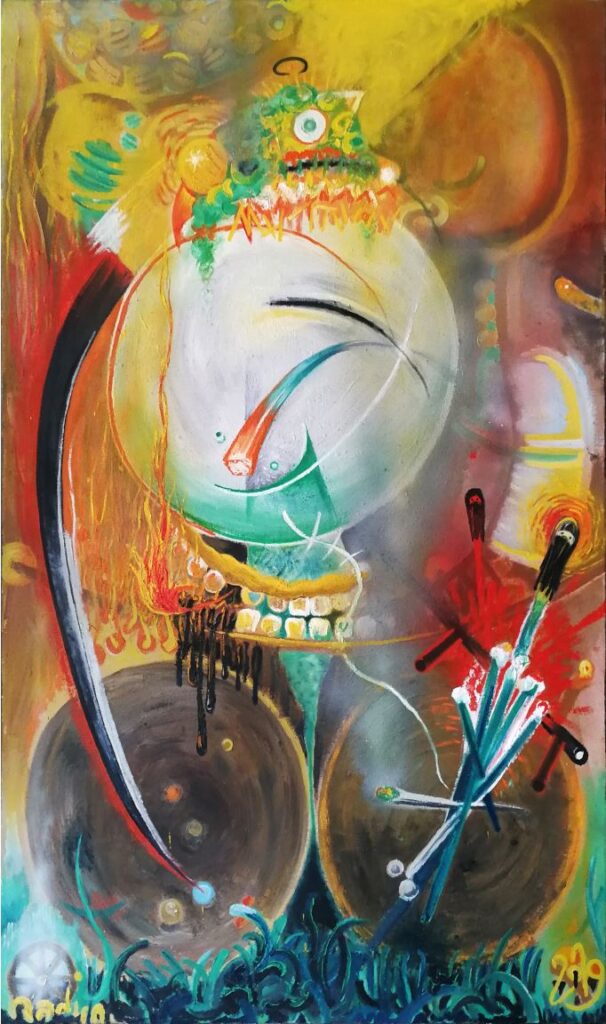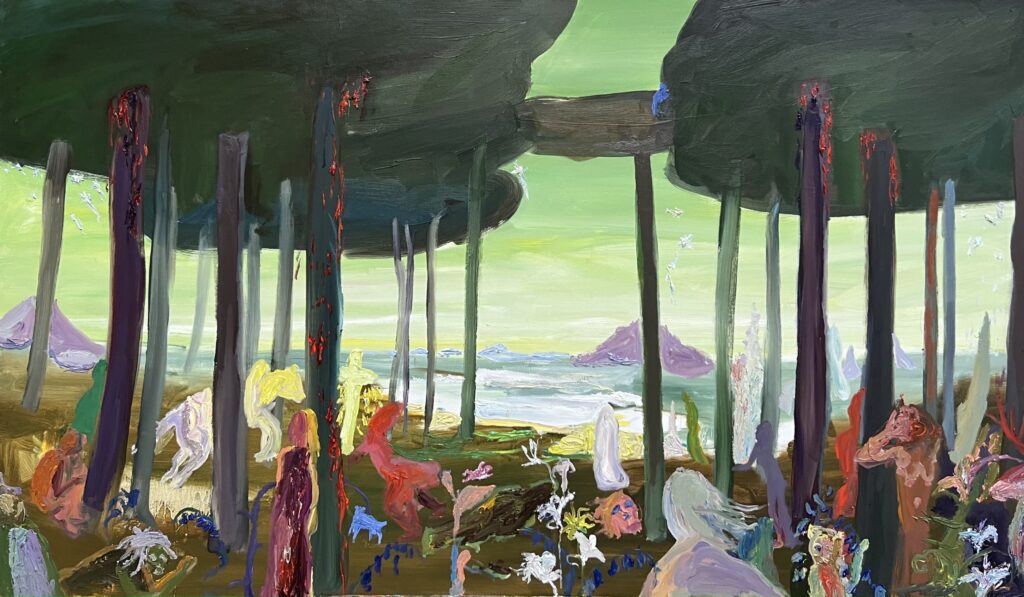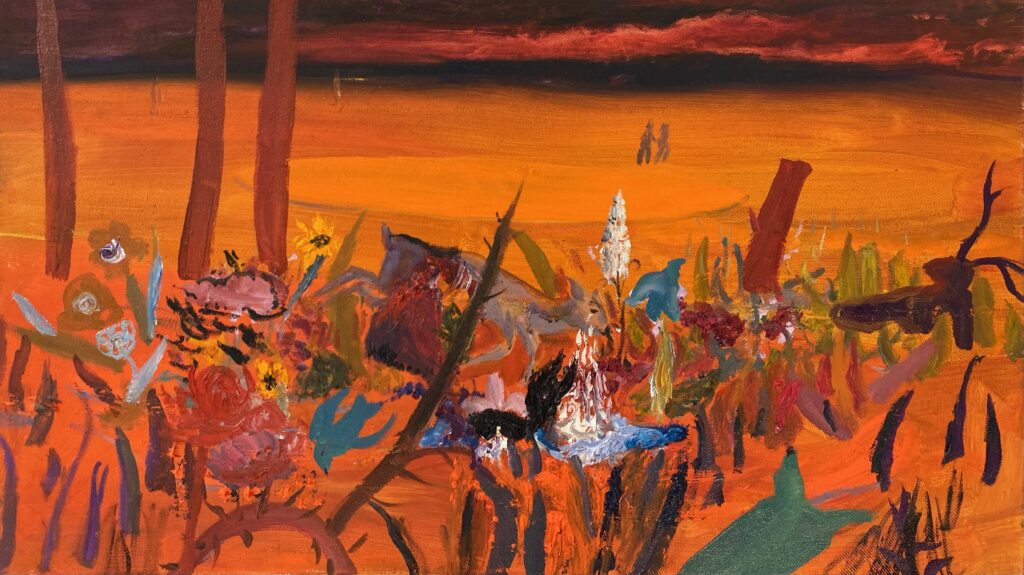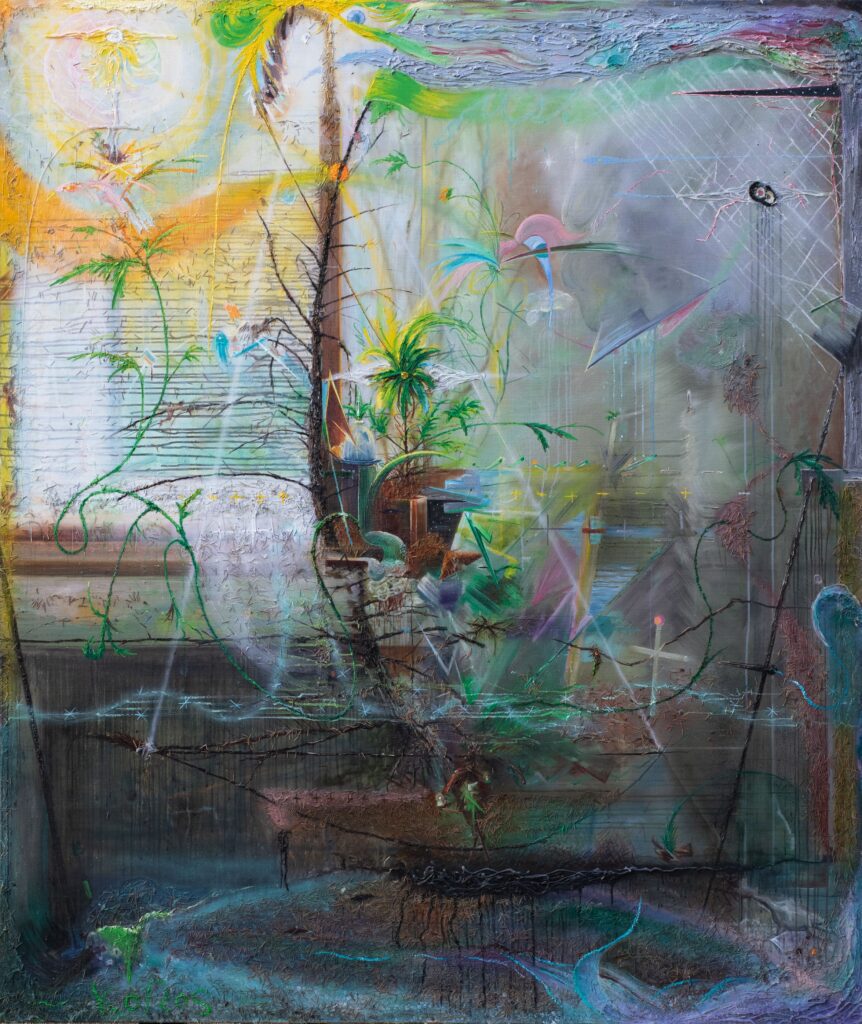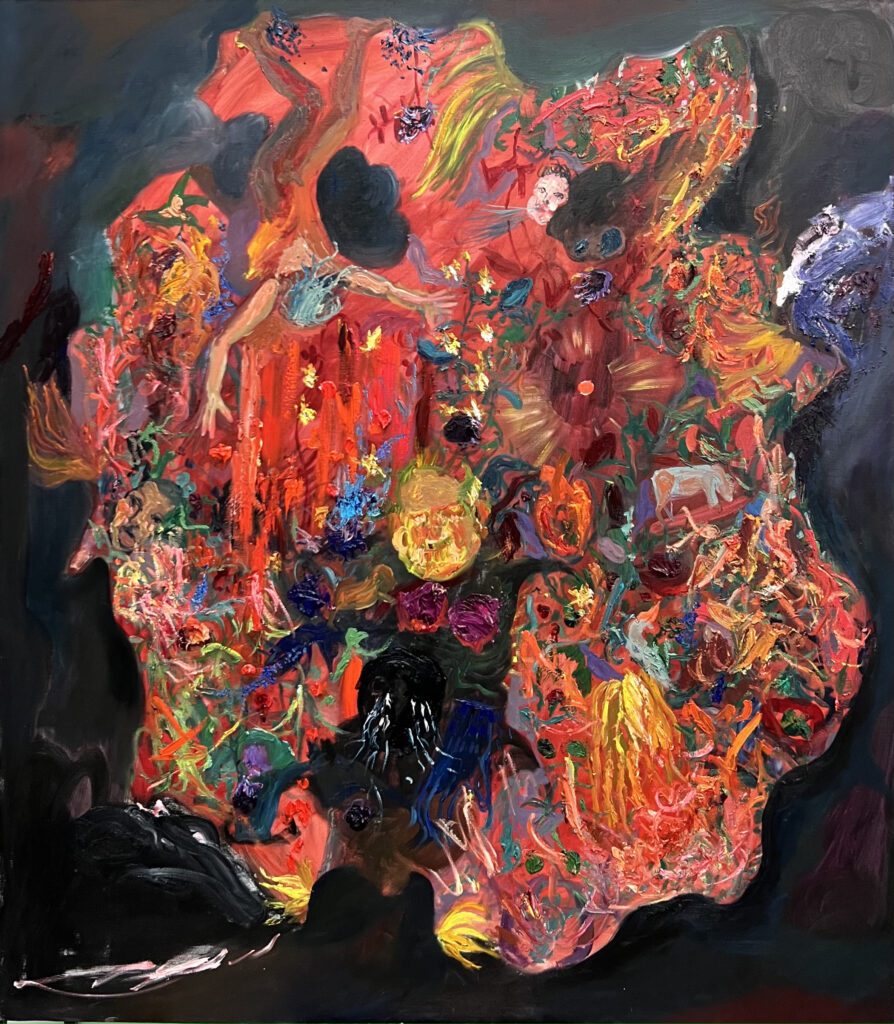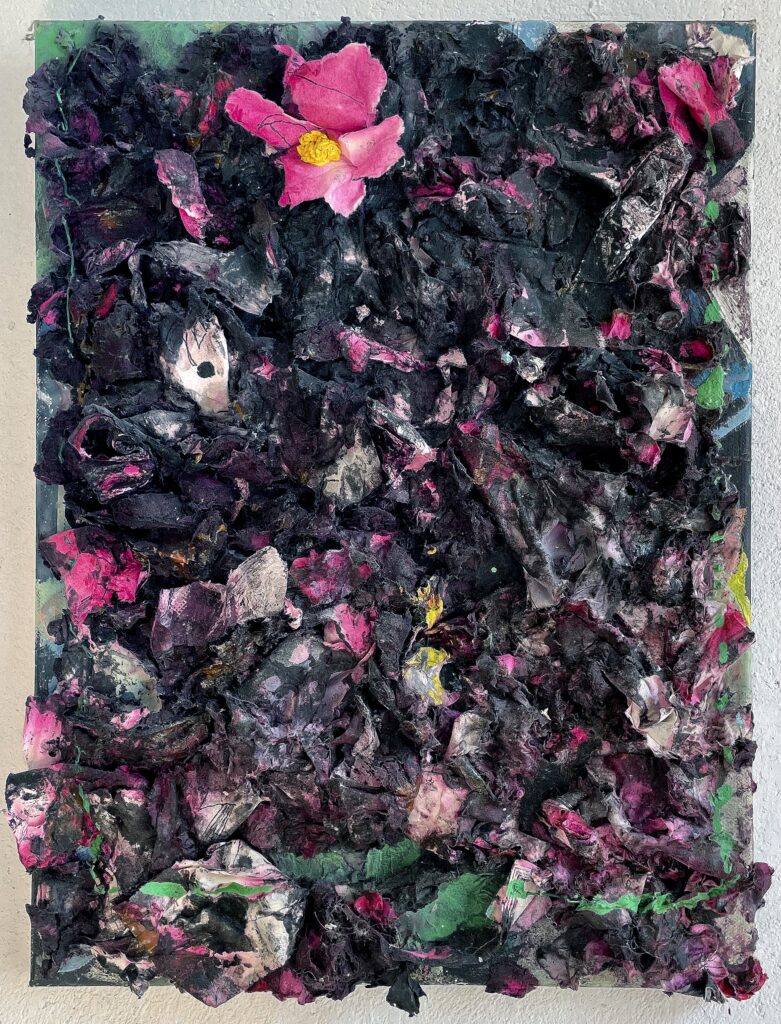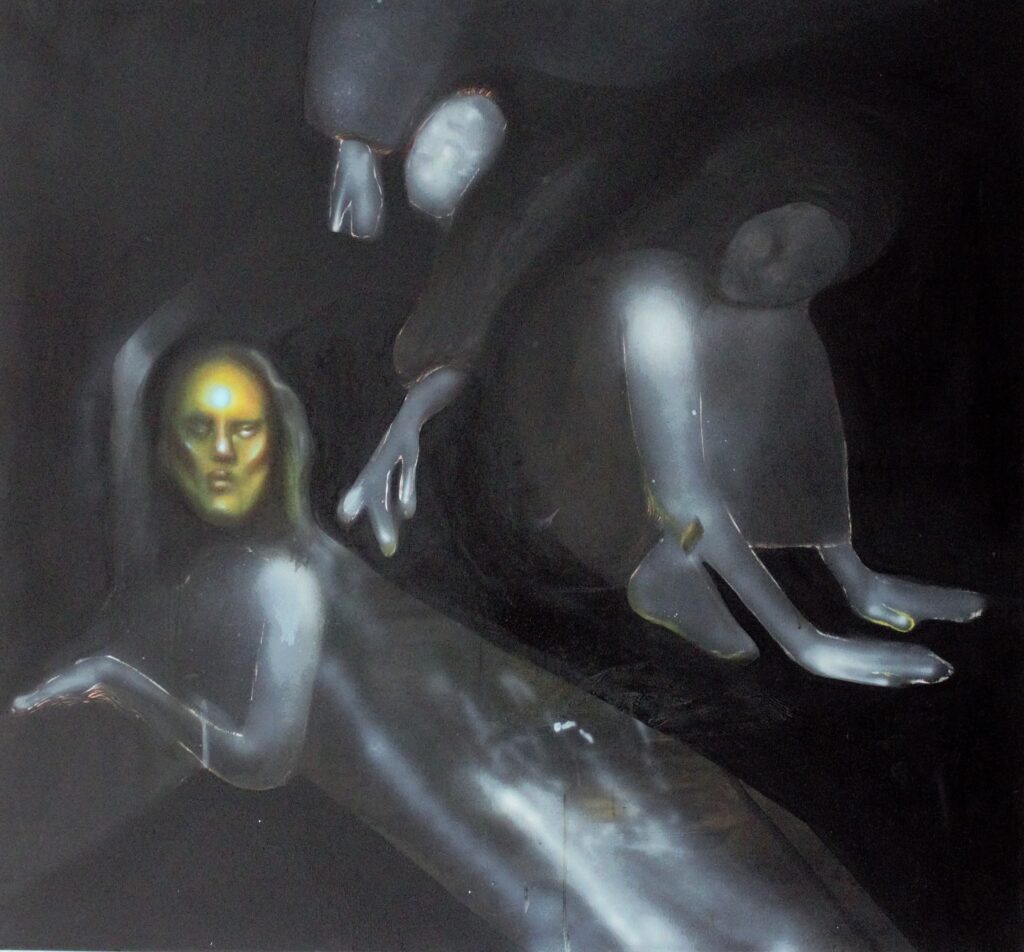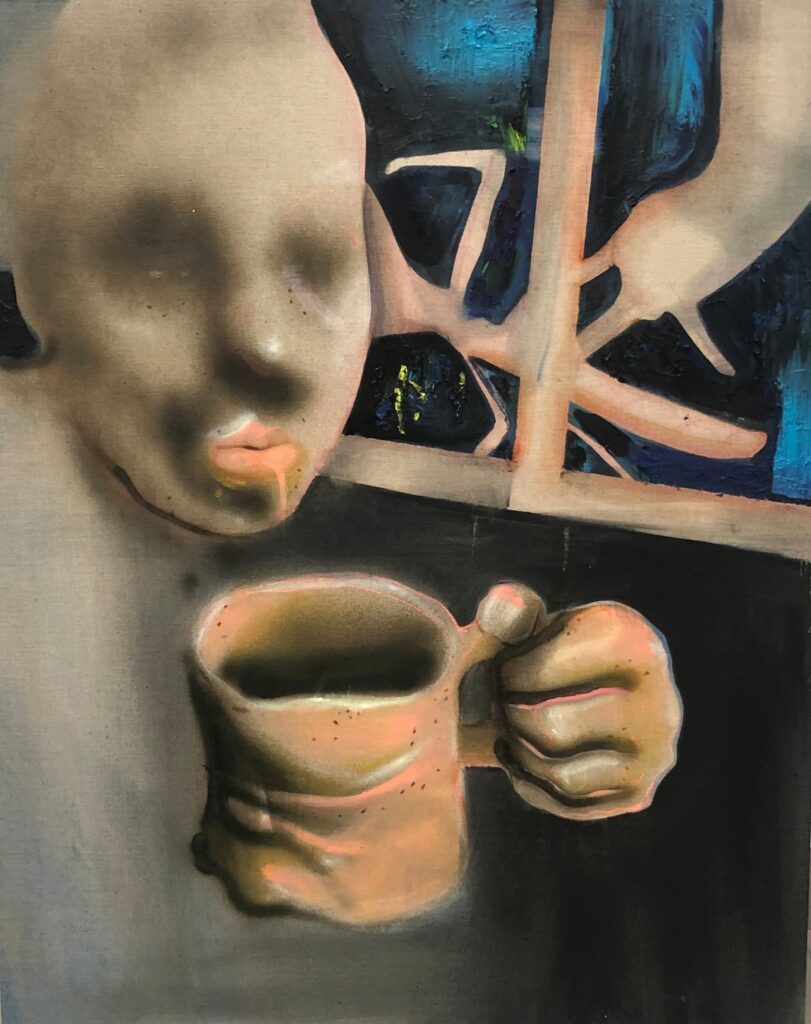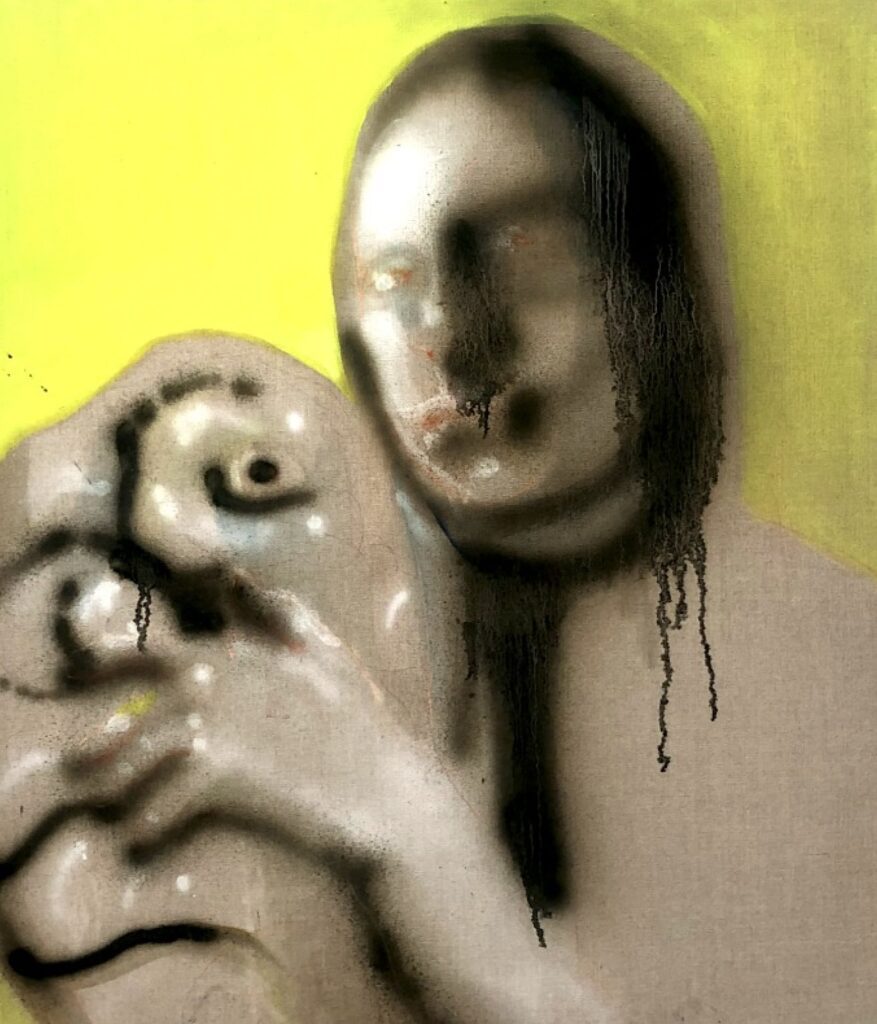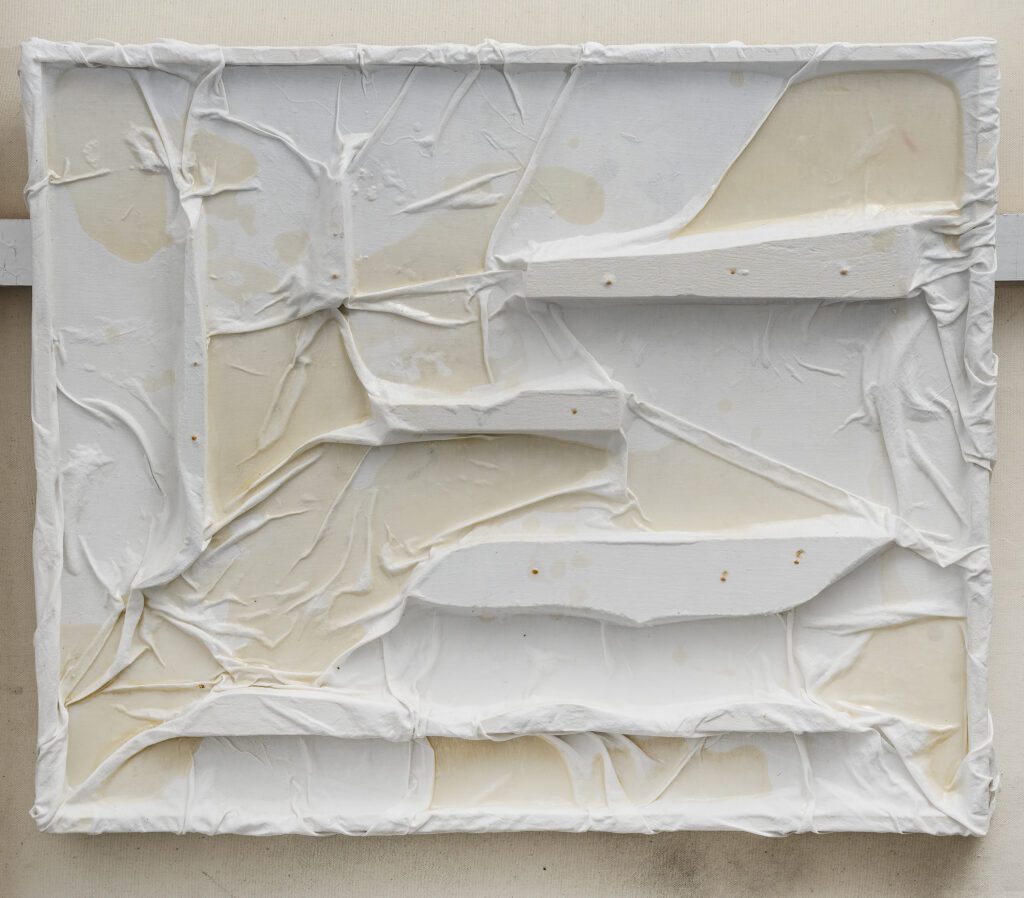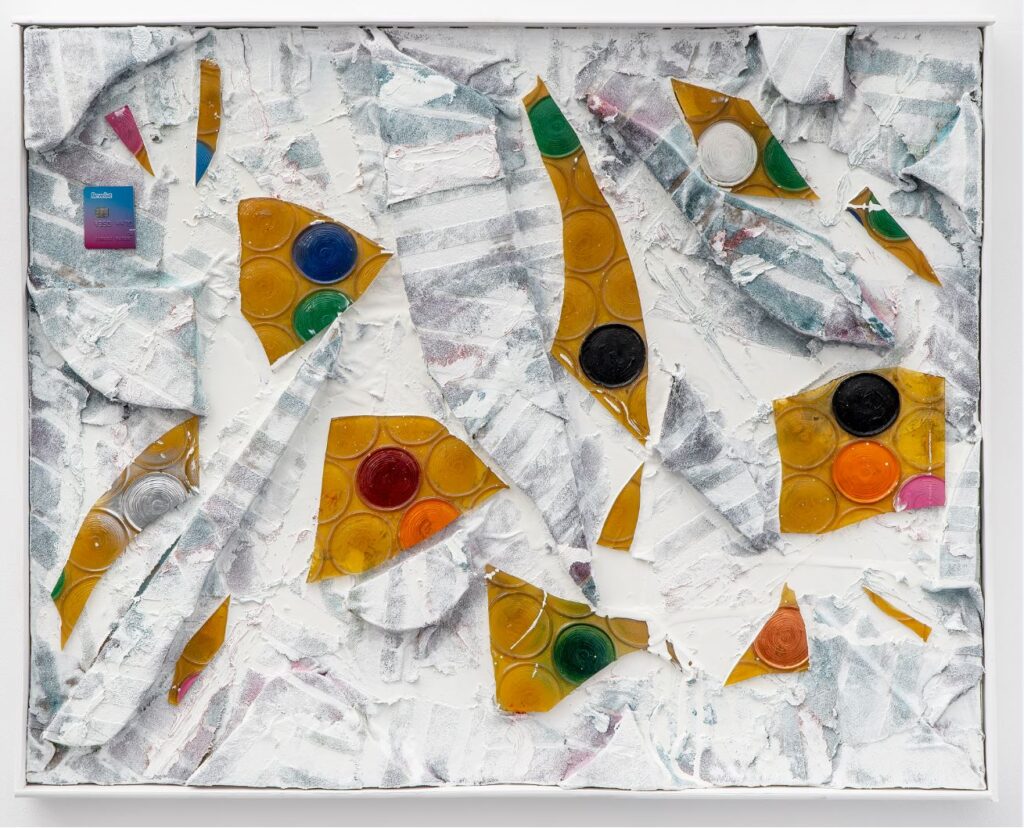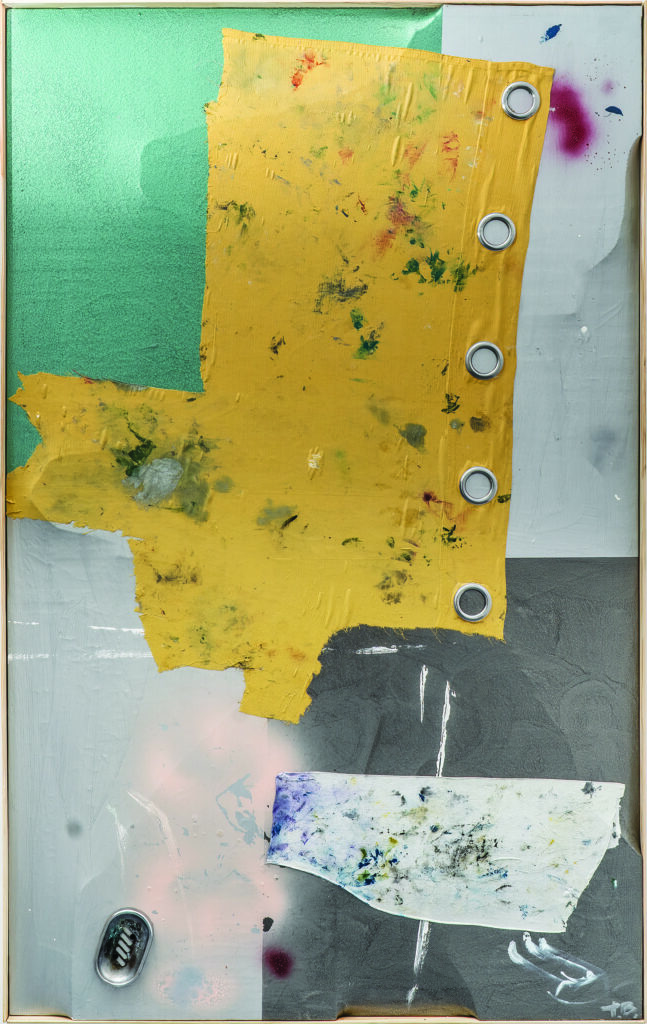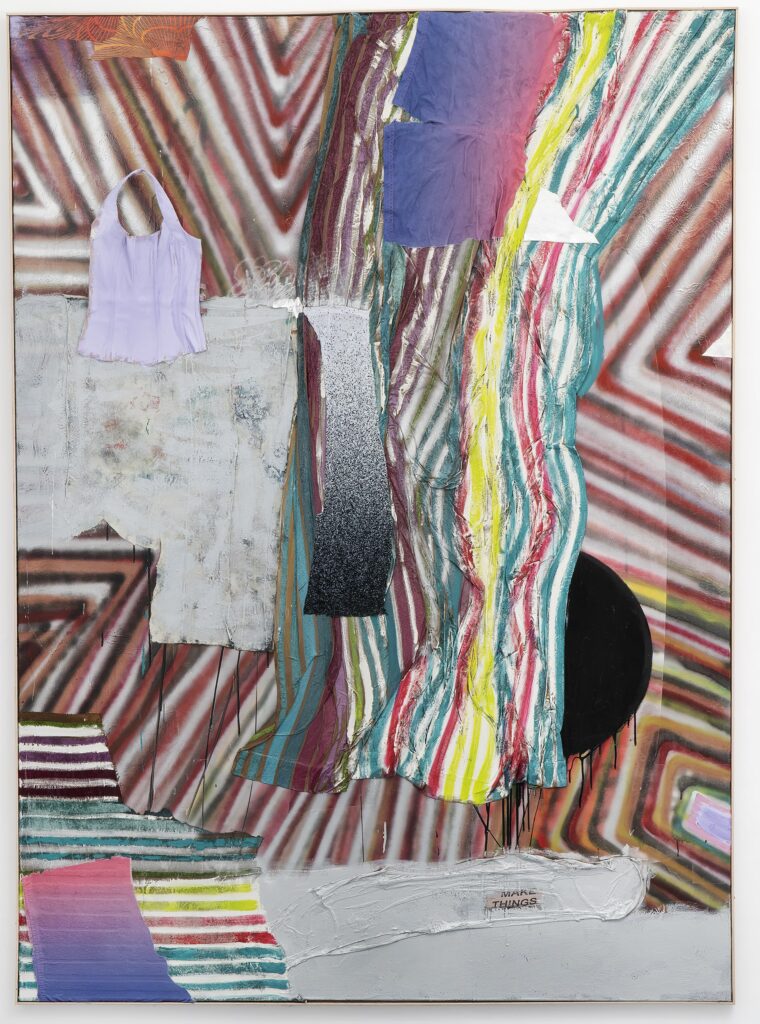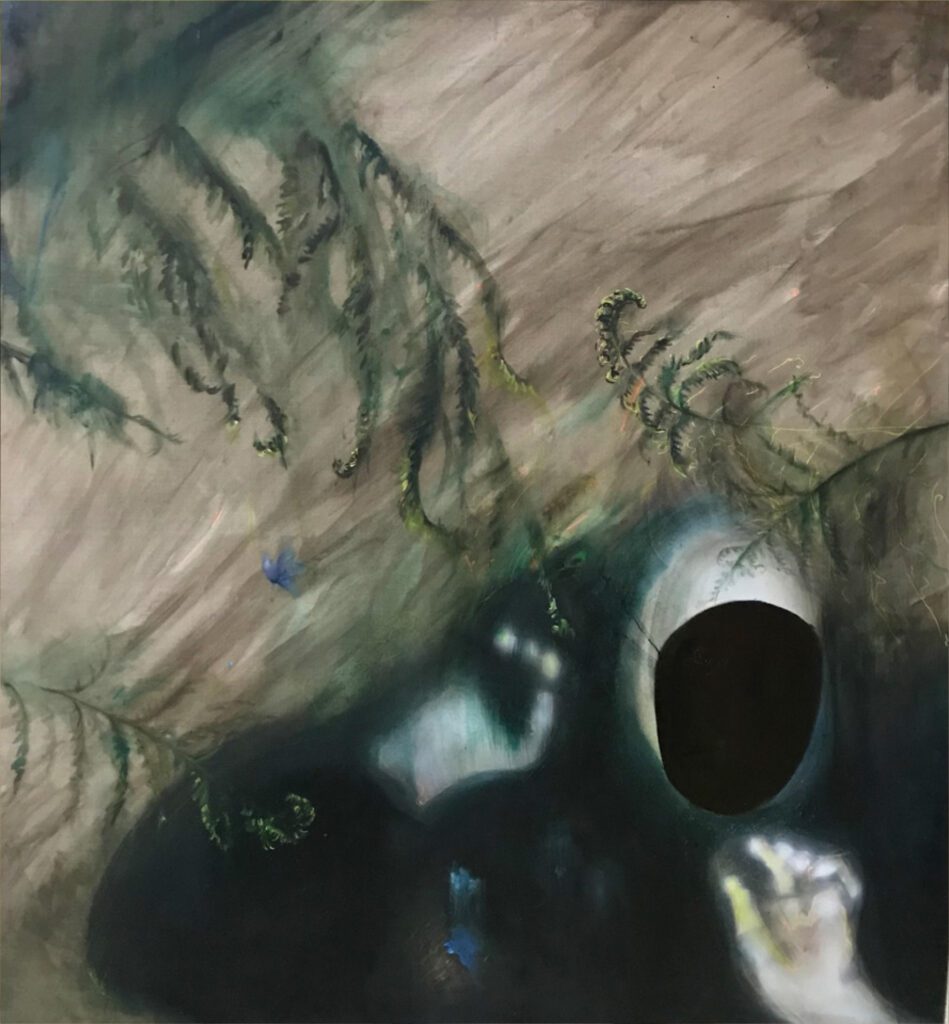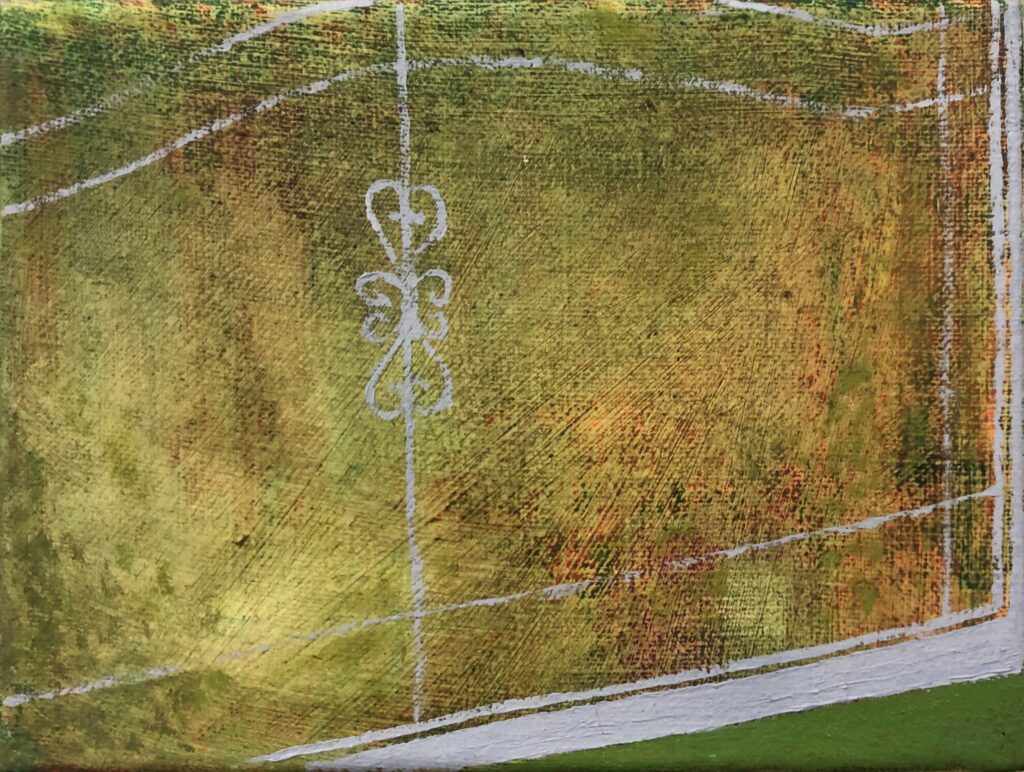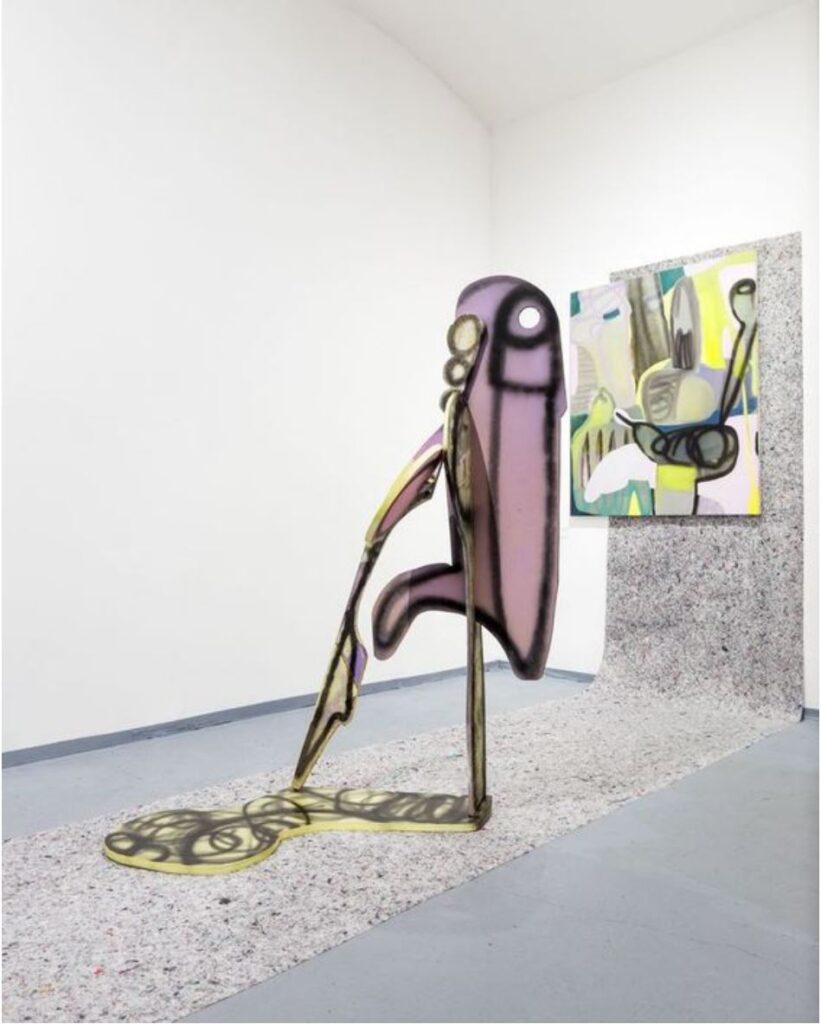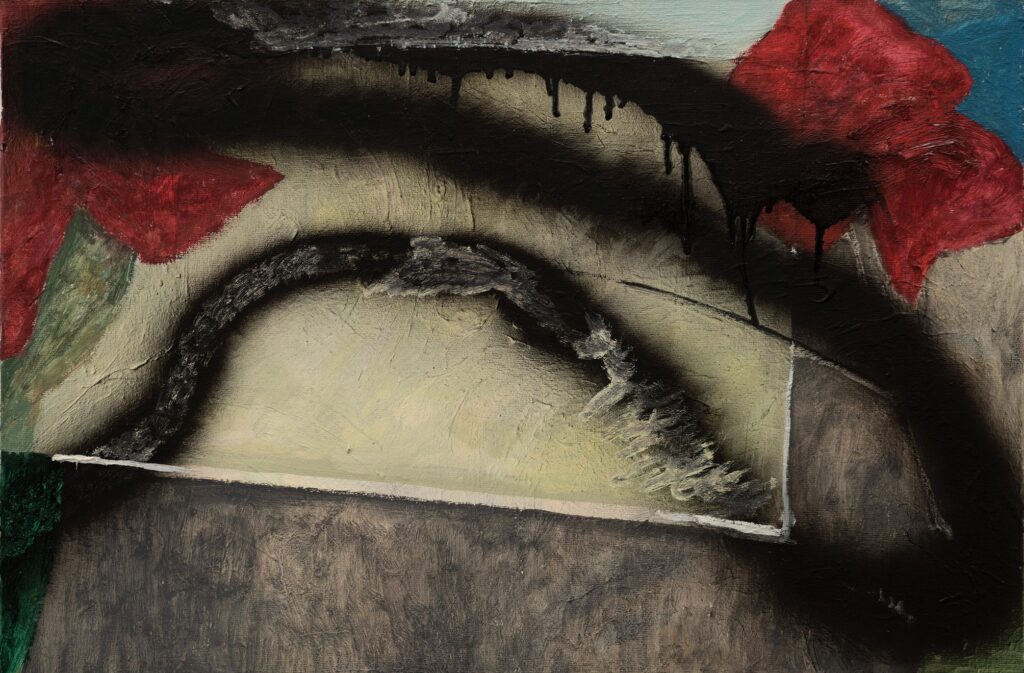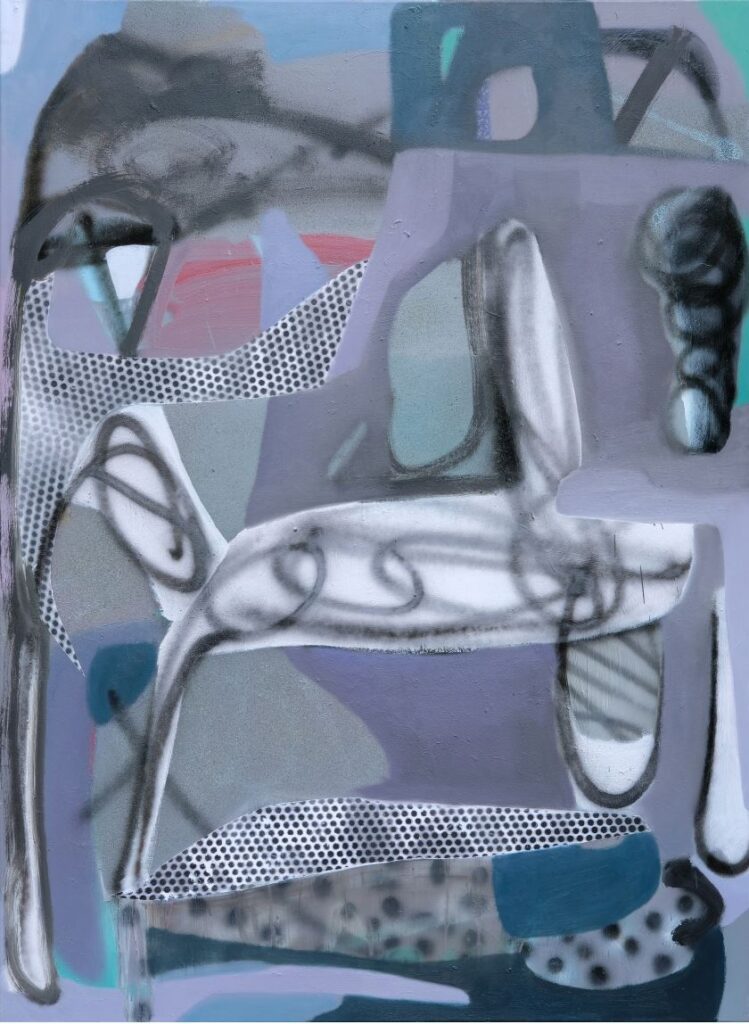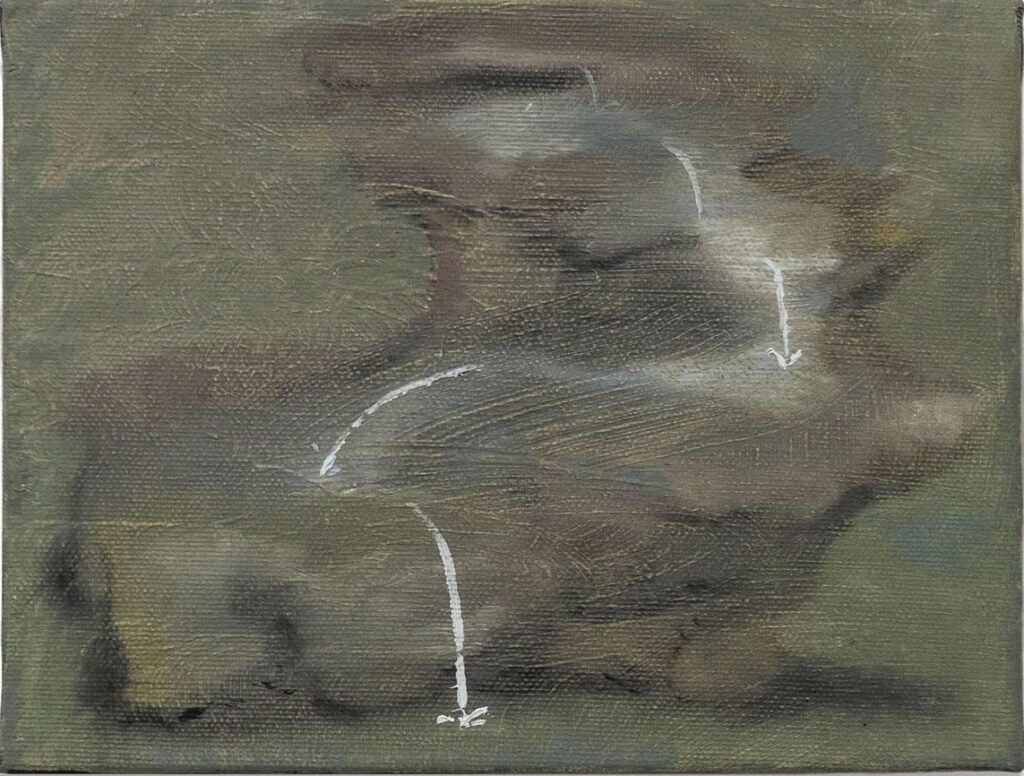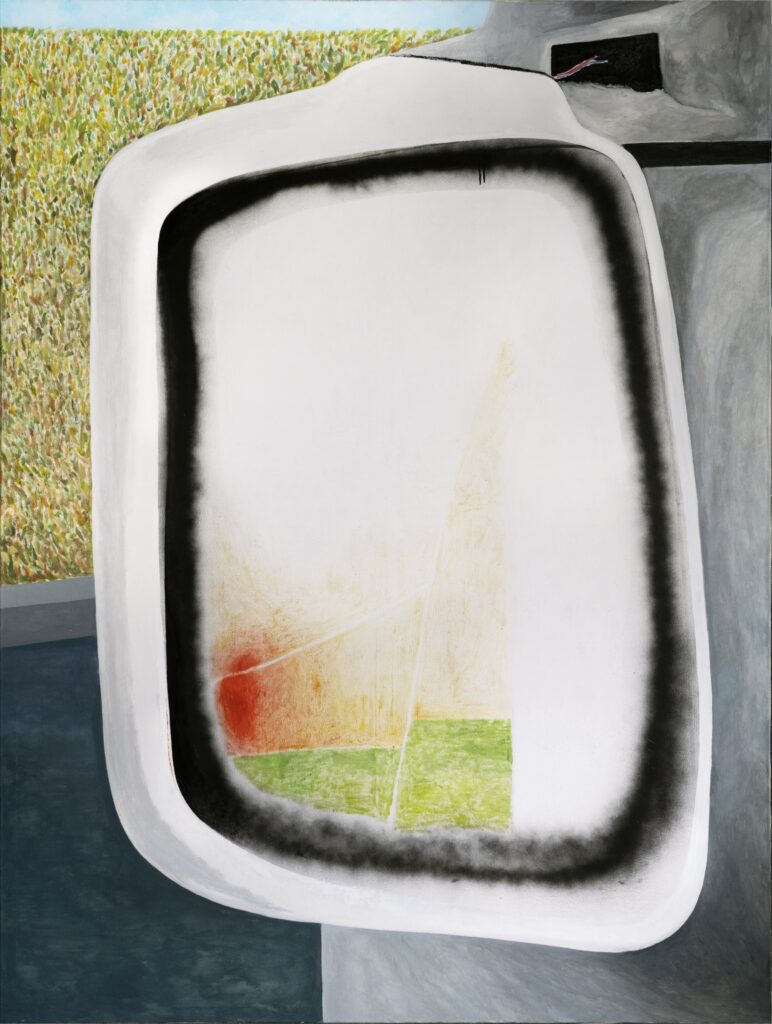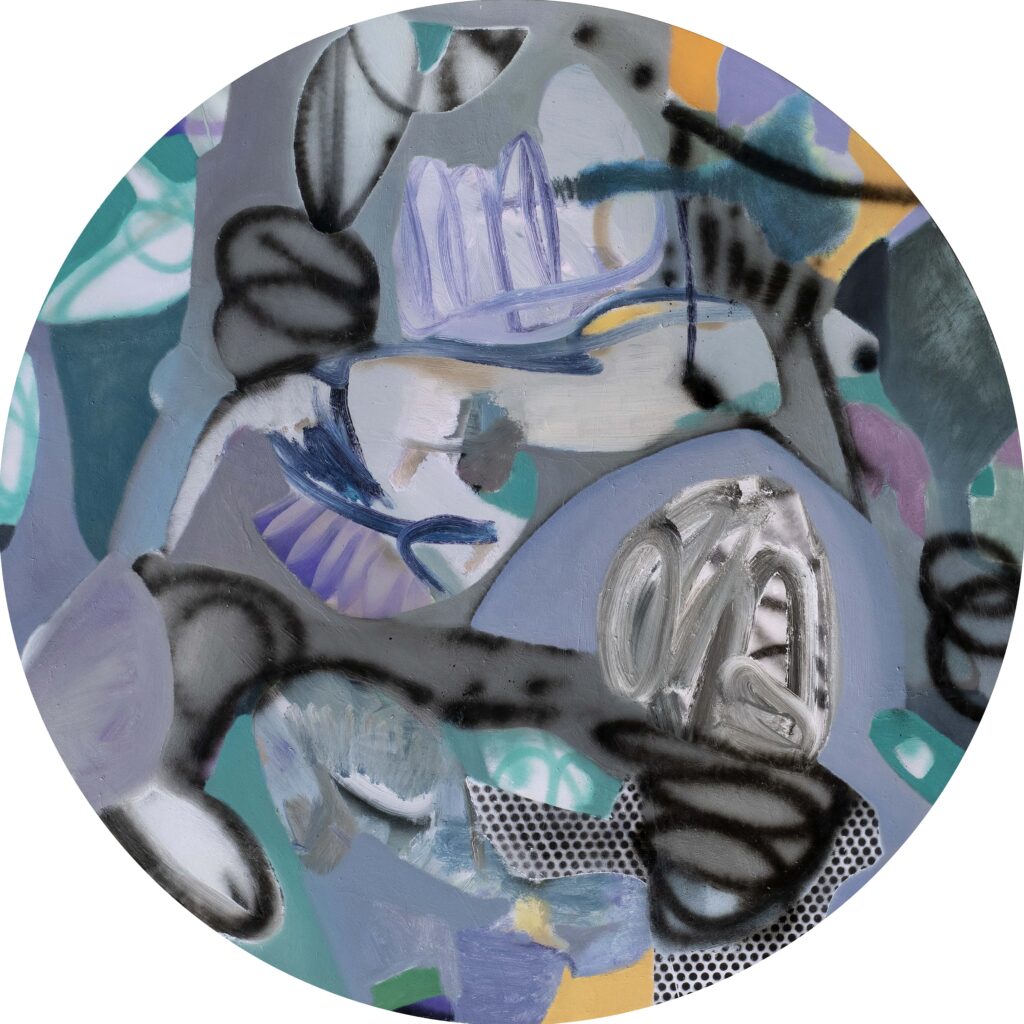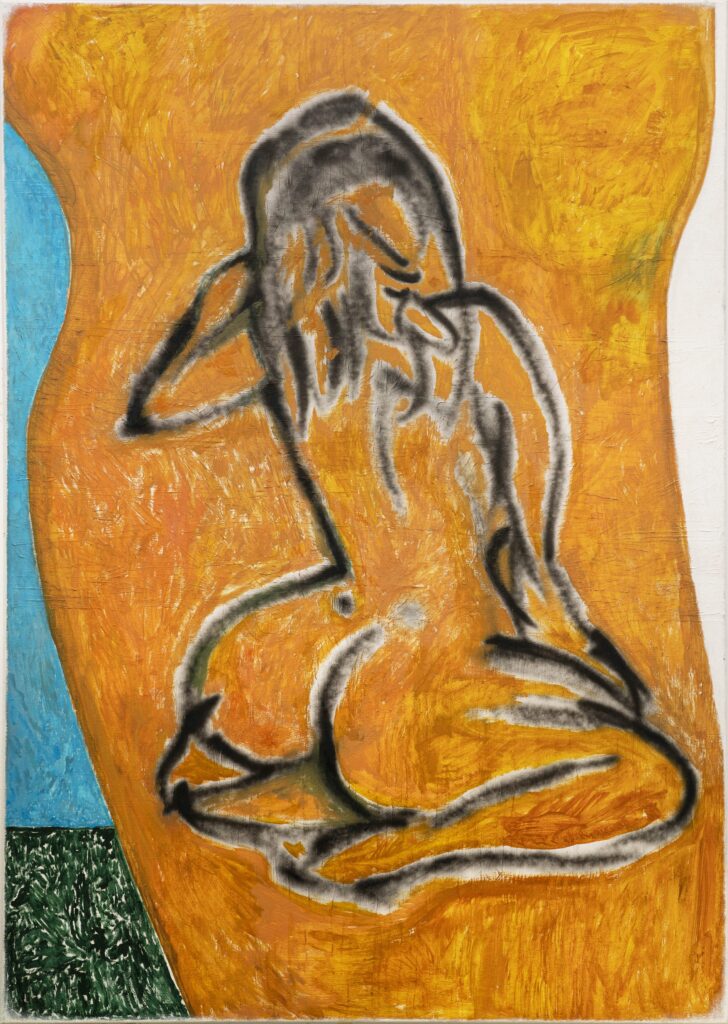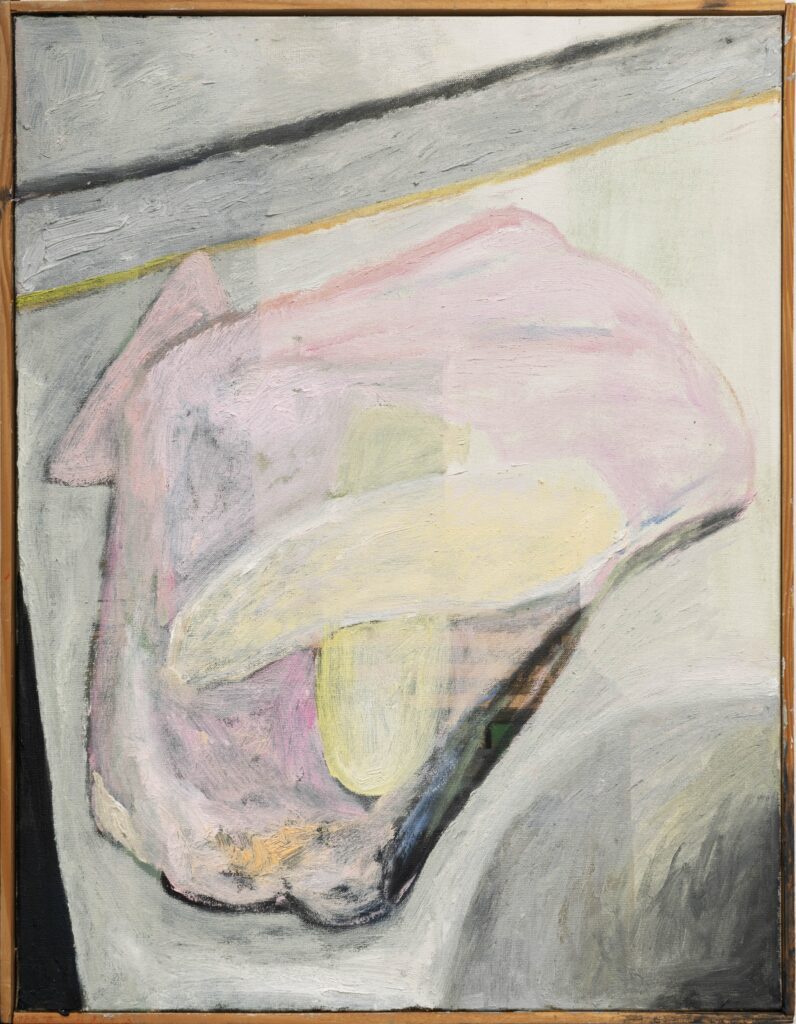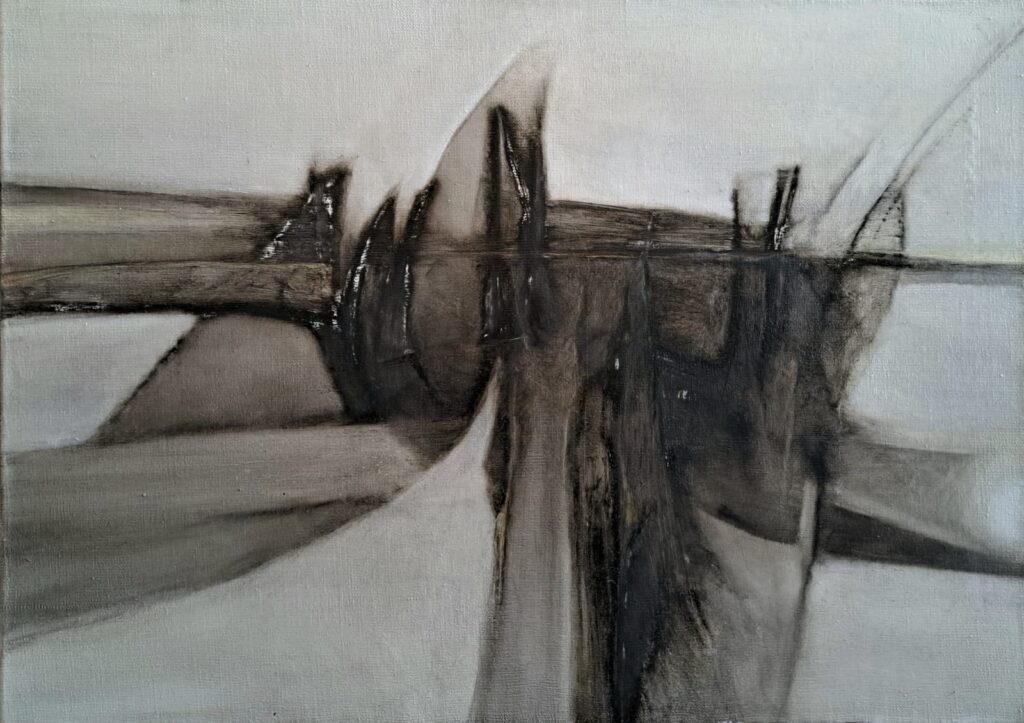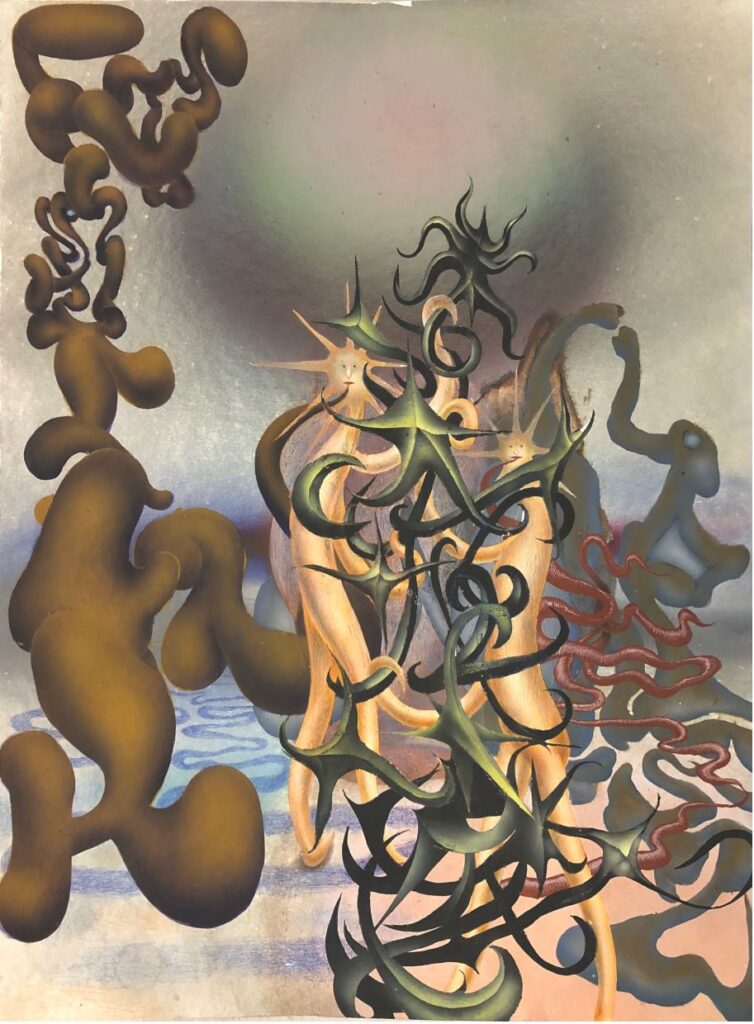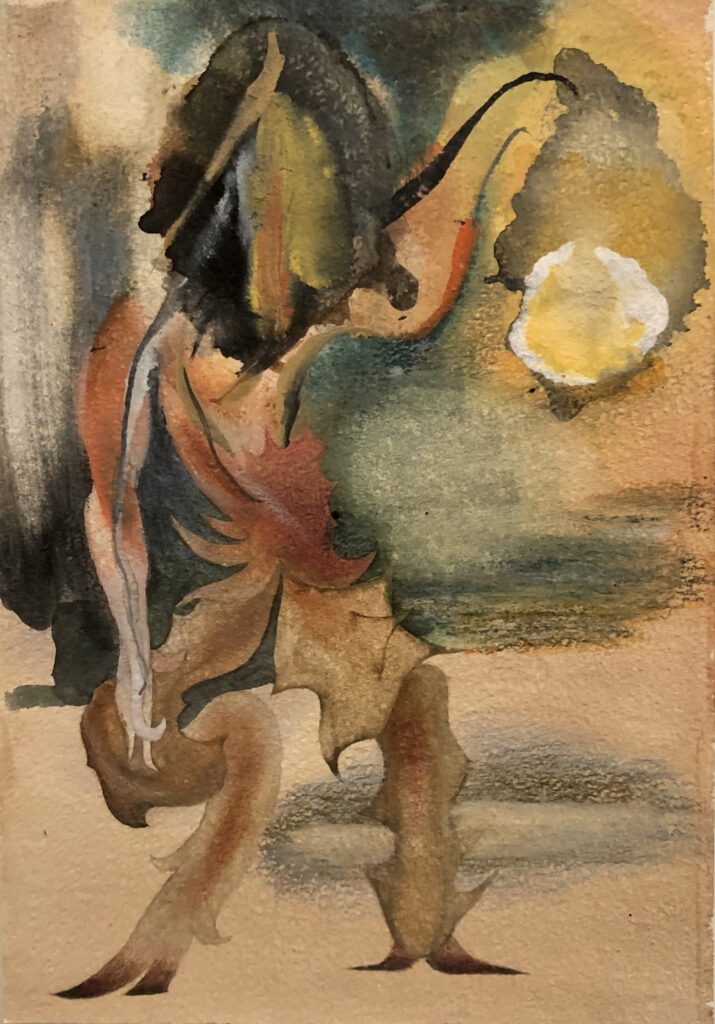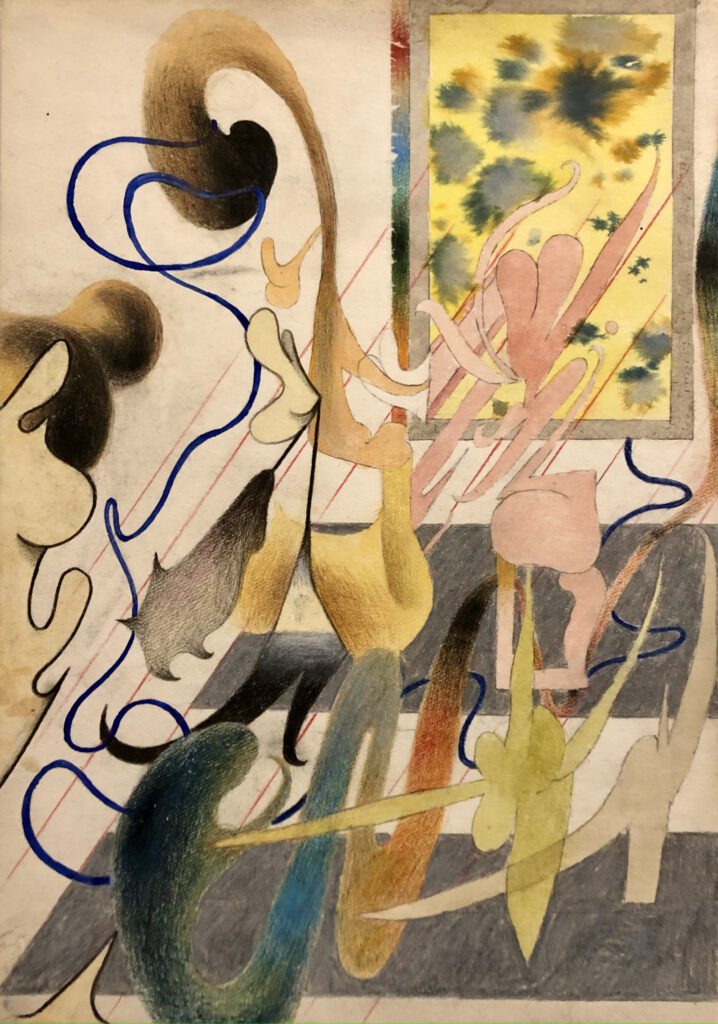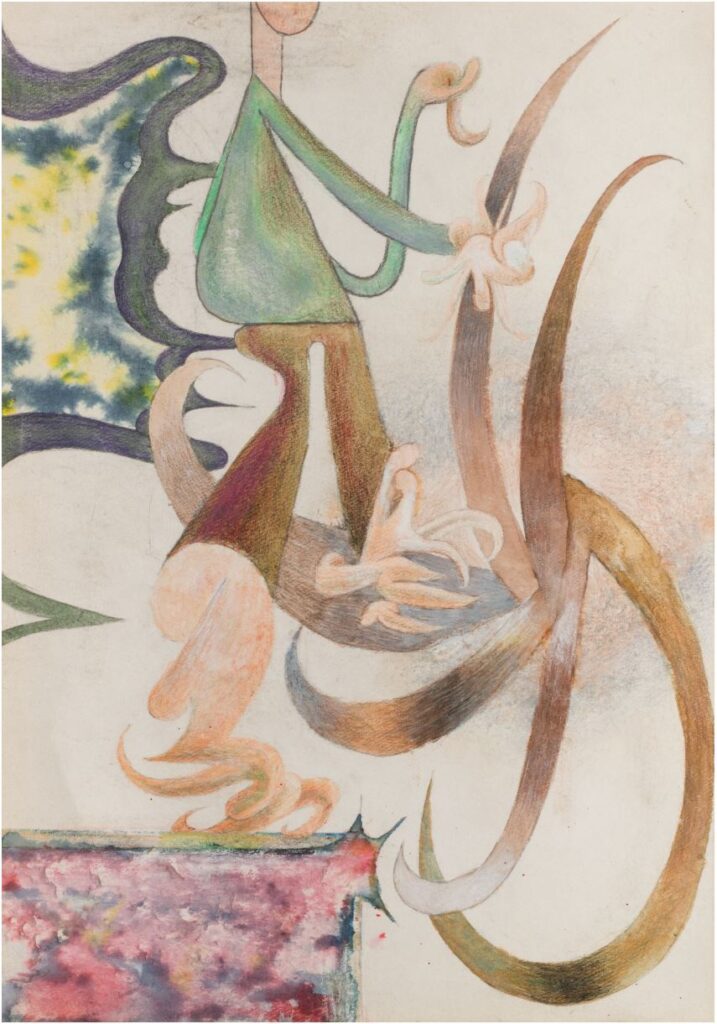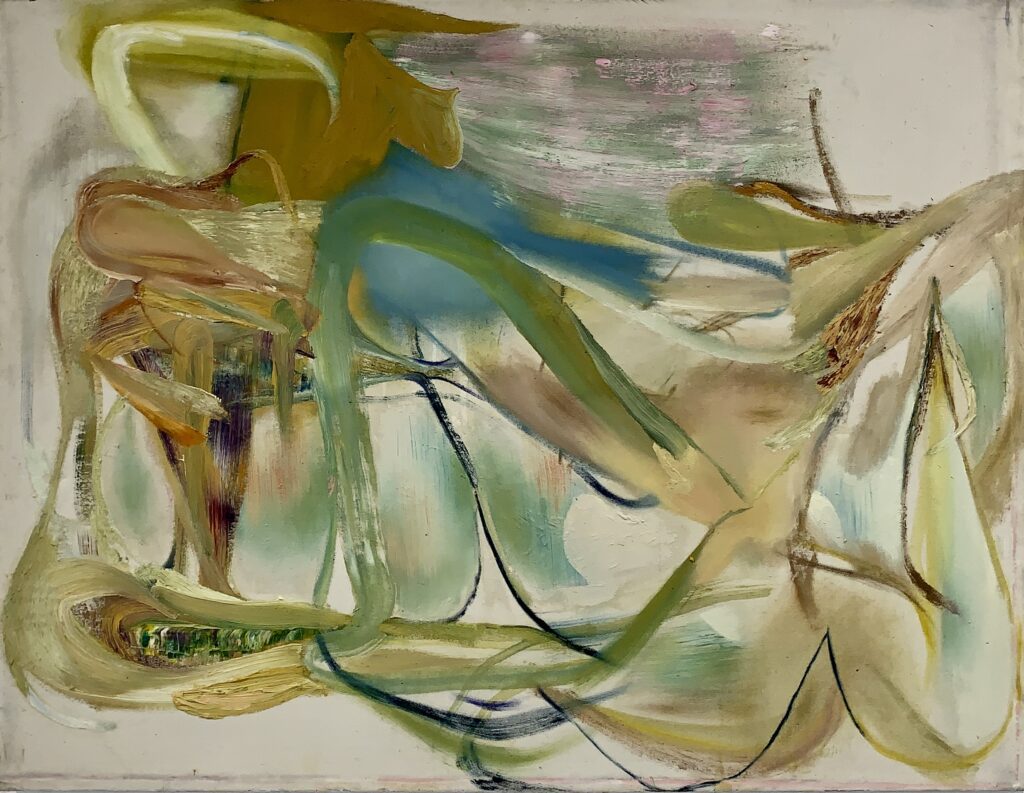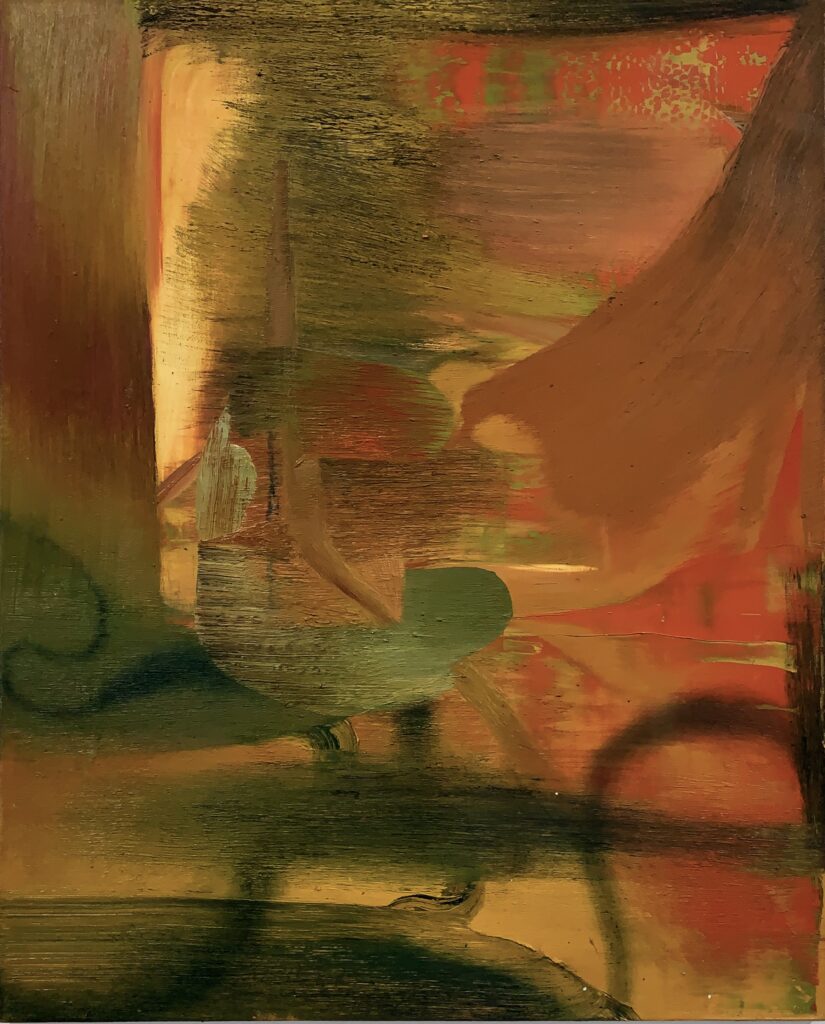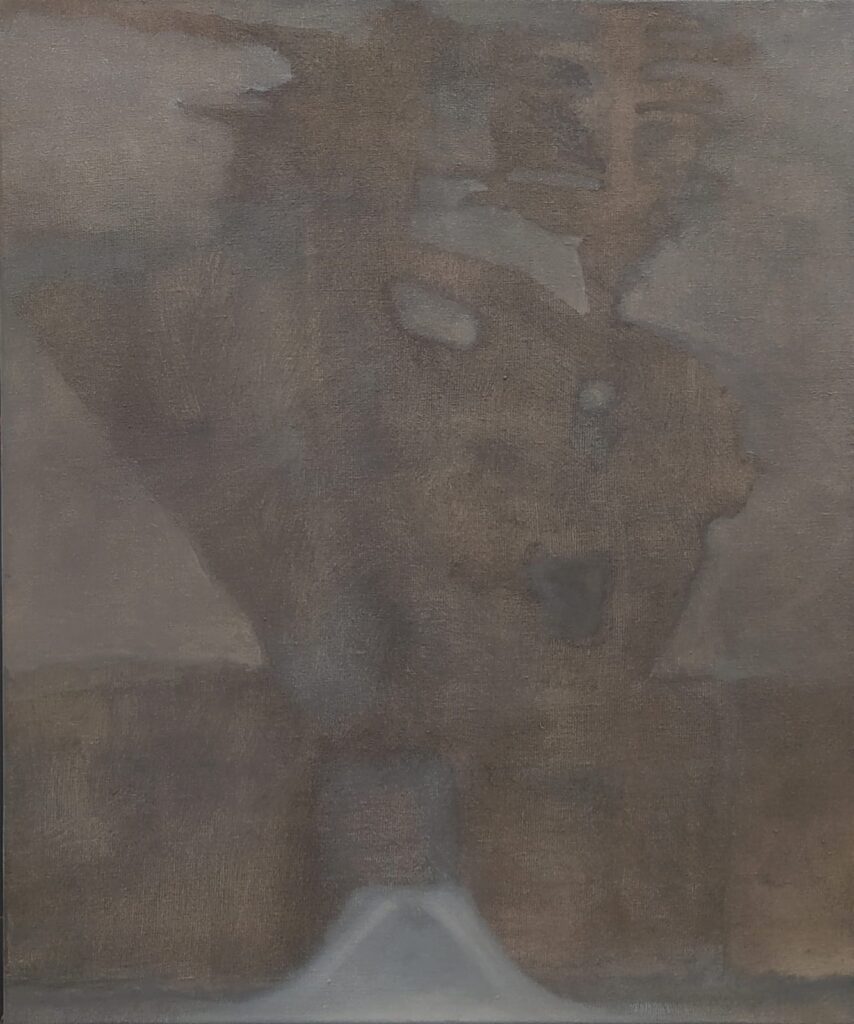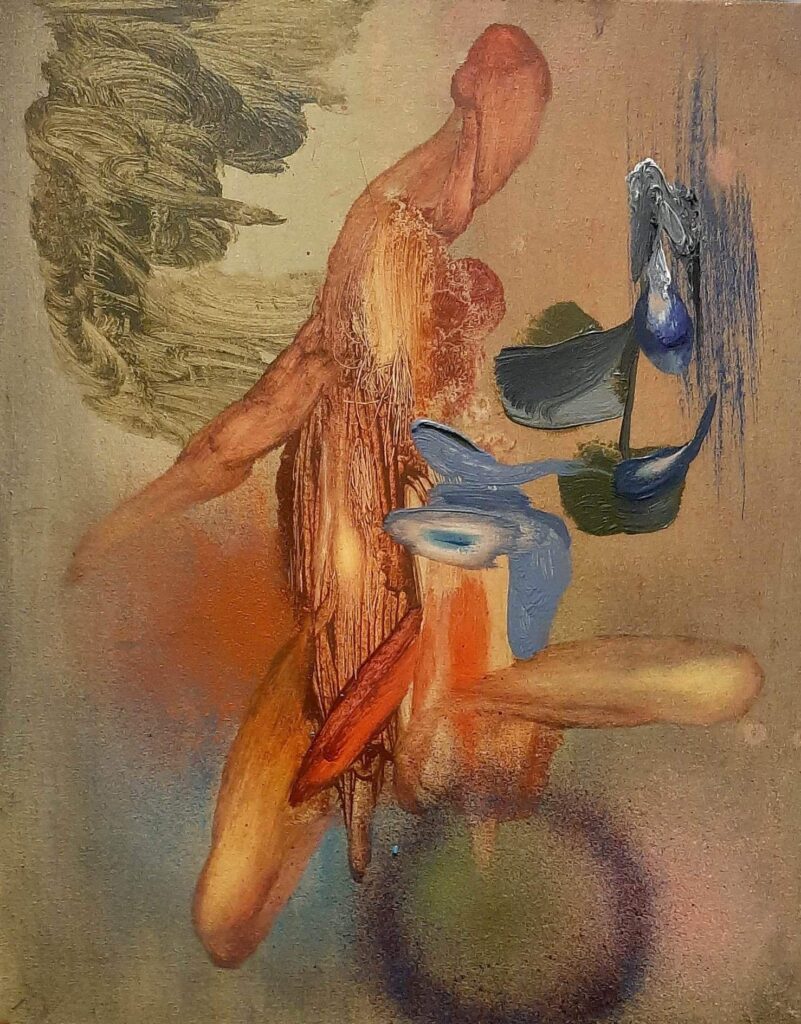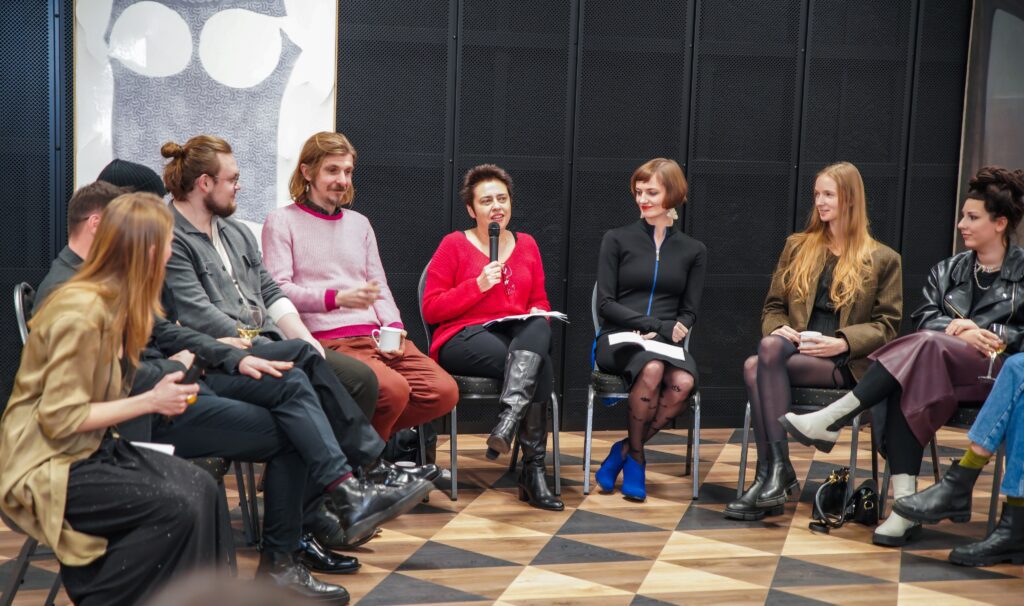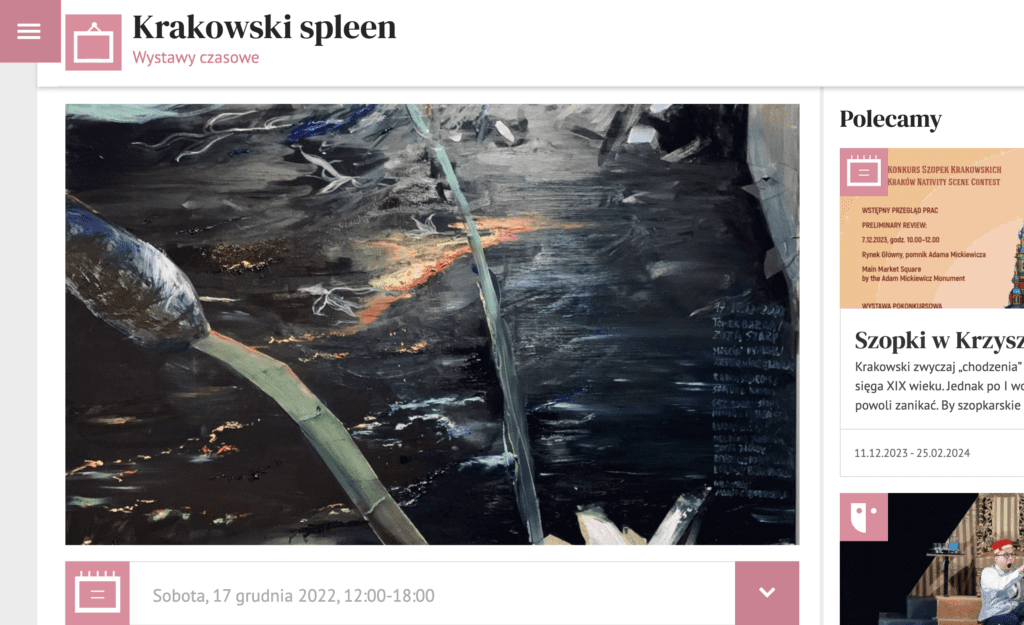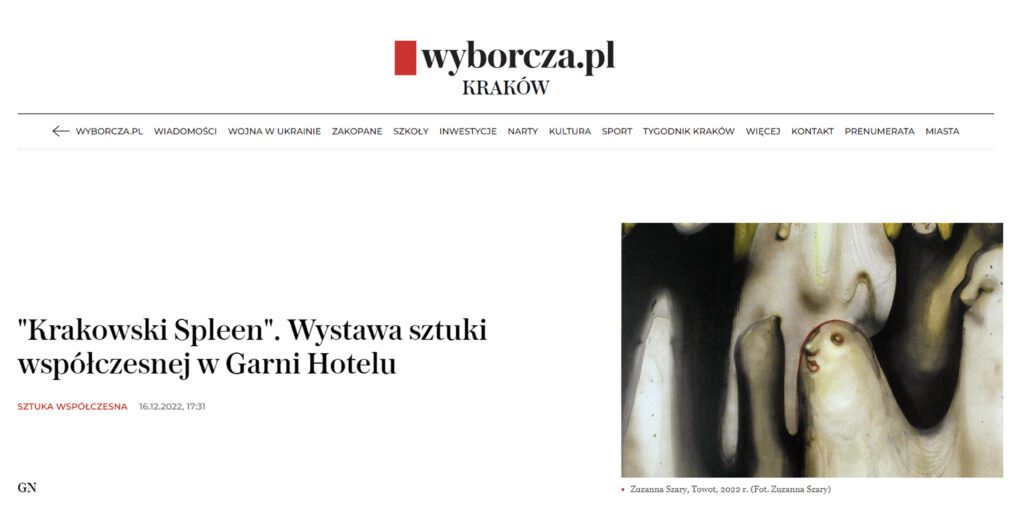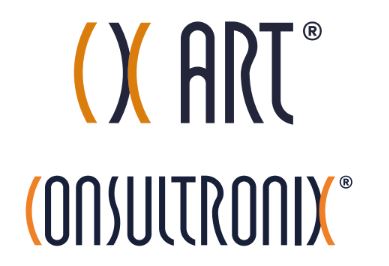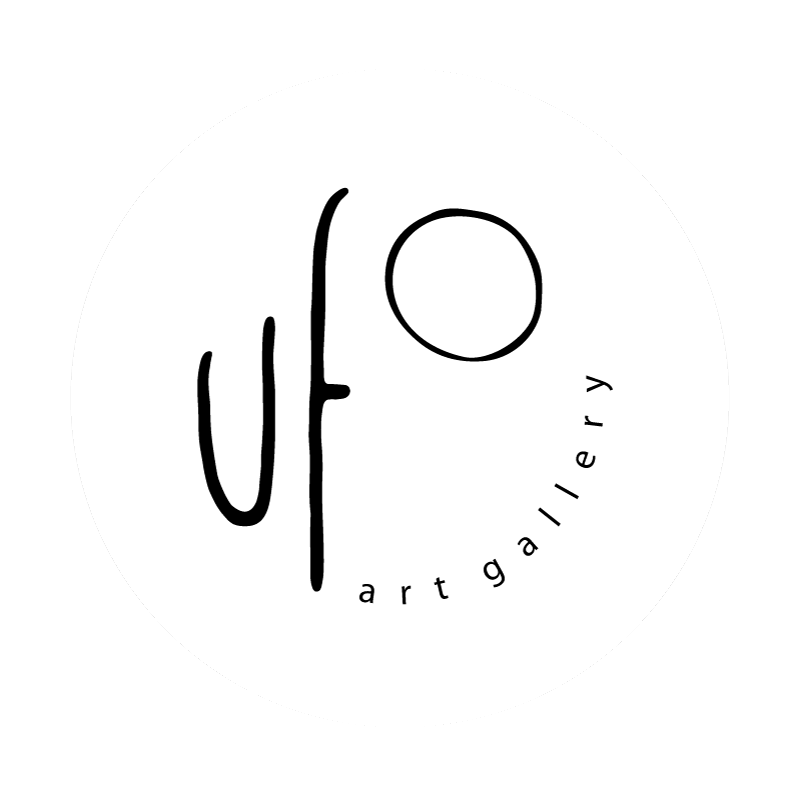It is a very specific feeling, a state when there is an agreement between artists at the level of art consciousness. Often in such situations, we stop talking, our eyes see. Excitement, tingling anxiety, intrigued intuition. An interpersonal connection reduced to a single glance. He knows, I know, she knows, it, they, we, you. Kraków Spleen.
The exhibition was born out of a cognitive curiosity that raises questions about what this dialogue will be like, a clash of close generations in the world of painting. Creative awareness, sensitivity, beautiful personality and artistic freedom, in their own unique constellations.
This is a juxtaposition of the statements of artists whose individual exhibitions were held in the spaces of UFO Art Gallery, Tomek Baran, Marcin Dymek, Radim Koros and Grzegorz Siembida, with the art of the next generation of artists, Zuzanna Szara, Artur Wieczerzyński, Samuel Kłoda and Michał Maliński. Five exhibition rooms in the interiors of the Garni Hotel, in the heart of Krakow’s Kazimierz district.
The exhibitions are accompanied by reflections by art critics and curators Delfina Jałowik, Zofia Małysa-Janczy, Łukasz Białkowski and Robert Domżalski, who will guide us through this unique labyrinth of art during the opening ceremony.
We invite you to attend the event, which will allow you to experience the different perceptual perspectives of the invited artists, theoreticians and representatives of the Krakow Art World
Maria Ciborowska
___________________________
Radim Koros | Samuel Kłoda
Garden od Krak


Spleen is particularly vexing in the Dietl delta, where ‘there is a river under the asphalt, the oldest riverbed’, and where ‘there are perennial drownings deep beneath the house’. Jackowska and Świetlicki irrevocably linked Krak’s town with a sense of hopelessness.
Samuel Kłoda and Radim Koros take up the challenge of disenchanting Krakow. Together, they created a garden that Boccaccio would call miraculous in his “Decameron”. Following Ansaldo’s example, they manage to bring to life one that blooms in winter as if it were May.
Feeries of vibrant colours burst out from under the snow. The unobvious shapes emerging from their canvases seem to be unfurling rhizomes or festoons suspended repeatedly. Looking at paintings such as Kloda’s ‘Garden of Chaos’ or Koros’s ‘Virtual Muse’, we see how the rachitic tendrils become solid branches at some point, and unknown creatures attempt to nest in these thickets. The Wawel-Acropolis is jealous of the periképoj of the Dietl Plants.
The chandrous Cracovian, however, can remain blind to this Dionysian festival of joy. If he notices a garden, it is an English garden in which the ruins of past Christmas haunt. The fragrant flower beds turn out to be a ditch reeking of carrion. It won’t even be the unease of Mehoffer’s ‘Strange Garden’, but a biblical Garden where the traitor is around the corner.
Robert Domżalski
___________________________
Tomek Baran | Zuzanna Szary
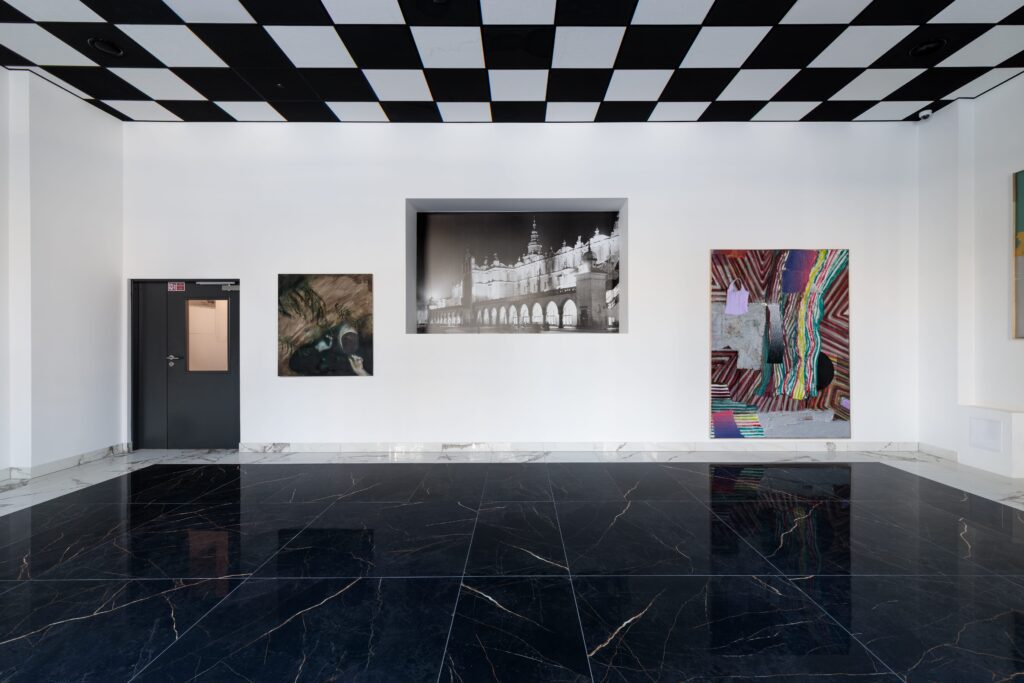

Susanna Szary (1995) focuses in her paintings on depicting the sensitive body and tender gesture. Her main protagonist is a woman, whom the artist portrays in many guises as a mother, a witch, a phantom, a lady, a sphinx…. Her face is covered, blurred or, on the contrary, illuminated. The figures in the paintings give the impression of being alone, isolated, with an absent gaze. Significant is the close association with the natural world, in which a microscopic non-scorch is elevated by magnification to the status of a domestic animal, and a rhinoceros cuddles up to the eponymous Madonna.
Within the framework of the classic oil-on-canvas technique, the artist explores her workshop possibilities and tests various ways of depicting – for example, she reaches for the airbrush or lets the paint flow freely over the painting.
Tomek Baran (1985) creates spatial painting objects. Their starting point is the loom itself, to which the artist nails subsequent elements. As a result, when the canvas is stretched, the appearance of the surface changes radically. The whole is completed with a frame created by the artist.
Tomek Baran describes himself as a “painter of material”. Abstract shapes are taken on not only by stains and layers of iridescent industrial paint or sprays, but also by pieces of material: glass, wood, rags for wiping brushes, torn clothes or personal belongings, detached from their original function and processed by the artist. The result is highly expressive compositions in which life, with its irregular forms and scraps, reigns supreme, seeking no order and drawing vitality from the traces of presence left behind.
Delfina Jałowik
___________________________
Marcin Dymek | Artur Wieczerzyński


Some things do not change. Just as in the 1980s, clouds hang over our city in the 20’s of the following century. Waiting for the wind to blow away the dark, billowing curtains, one can – in the footsteps of a Maanam record – walk the streets, dance the tango or smoke opium. For creative people, dark, creased curtains can be not only an excuse for spleen, but also a pretext for exploring the worlds they potentially hide or obscure. In the case of Marcin Dymek’s works, these worlds are repeatedly complex, opening up unobvious perspectives, decentralized like clouds floating in the sky. At times, the varied patches of paint resemble feathery cirrus, at others they take over the space like clusters of cumulus or, like layered stratus, they overlap one another in order to undermine previous formal arrangements. A counterbalance to the compositionally complex, color-saturated works of Marcin Dymek are the central, almost monochromatic canvases of Artur Wieczerzyński. For him, the key is the first, often intuitive or accidental painting gesture, around which the further creative process is organized. By asking himself what a painting can be, the artist tests the possibilities of painting as a terrain for the coexistence of different, often contradictory dynamics.
Zofia Małysa-Janczy
___________________________
Grzegorz Siembida | Michał Maliński
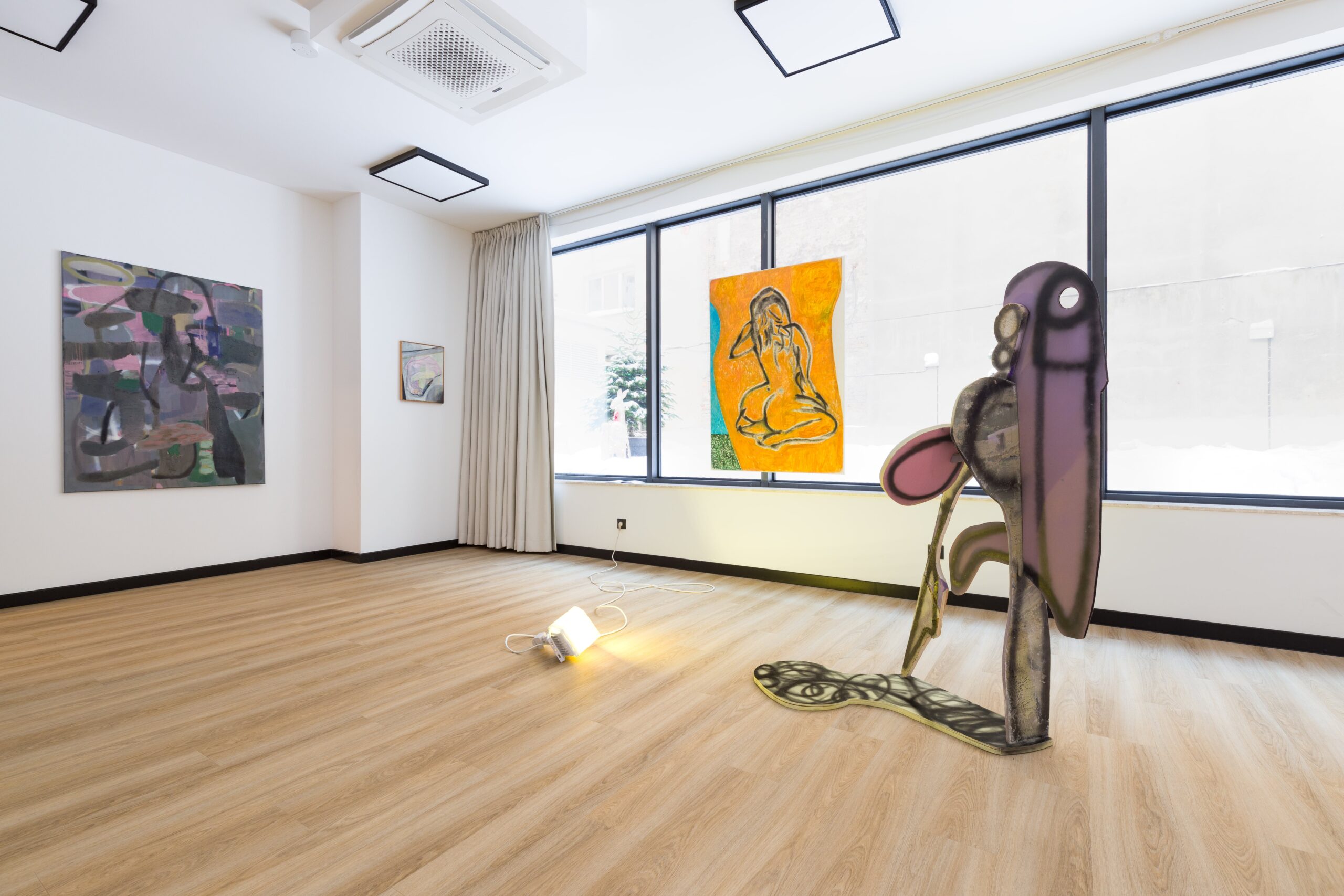

We worked quickly on the exhibition. Almost as fast as the es and flores on Grzesiek’s paintings, and as fast as the sunlight flashed in the mirror on Michał’s work. Although no one was in a hurry, the skill had done its job. In order to hide their appreciation, the nude lady whose heel was stinging her bottom turned her head away from us, the growling dog became dumbfounded and the abstract patches turned even bluer and greyer. All this because a dozen or so paintings that had previously known each other only vaguely began to look at each other as if they had known each other for a long time. As if they were reflecting in each other and finding pleasure in seeing the similarity. One could end there, but honesty compels us to admit that we looked at each other with some embarrassment. Because when we opened the curtains, it became apparent that, reproduced in the glass, behind which a thick layer of snow was visible in the darkness, the exhibition looked even more magnificent. We realised that we did not only owe this success to ourselves. That we had to share it with the mirror image in the windows. But let the snow hold. Or at least let it not disappear as quickly as this exhibition was created.
Łukasz Białkowski
